

Cruise Control Symbol On Dashboard: Standard Symbol
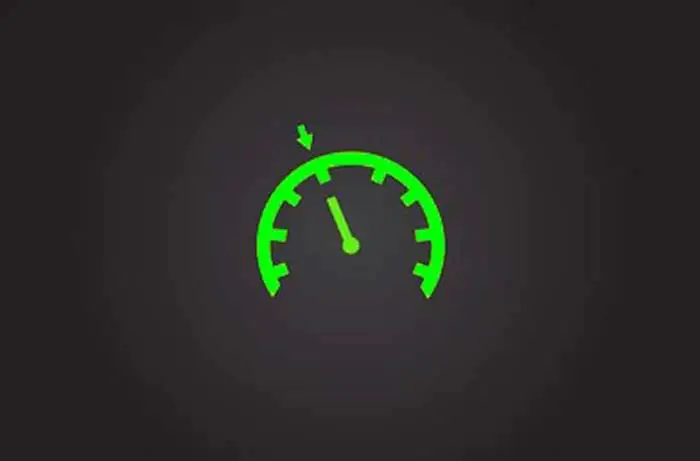
The cruise control system is an important part of a vehicle. It is a feature that helps the driver maintain a consistent speed without having to constantly adjust the accelerator pedal. This can be especially helpful on long road trips or in stop-and-go traffic. The cruise control system uses sensors to monitor the speed of the car and then adjusts the throttle accordingly.
If you have ever been driving and seen a small symbol that looks like a car with wavy lines behind it, you were probably wondering what it meant. This article will explain the meaning of the cruise control symbol on your dashboard. In this powerful guide, you are going to learn cruise control symbols and also adaptive cruise control symbols with pictures in two minutes.
Cruise Control Symbol On Dashboard
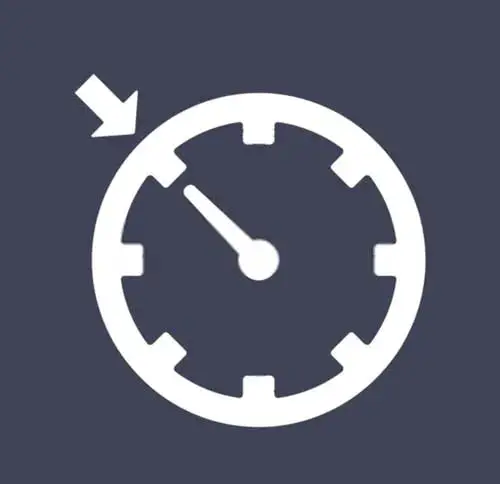
Cruise control is an electronic feature that maintains the car’s constant speed without holding the foot on the accelerator pedal. It evolved over the years, but the essence of cruise control is still the same to maintain a constant speed without holding your foot on the accelerator pedal.
It uses symbols to let you know the state of the cruise control. Every car manufacturer uses symbols with little variation, so it is better to visit the car owner’s manual for the specific symbol your car use.

Some cars, especially old cars use the text symbol “Cruise Main” to show the cruise control is turned ON. Once the car speed is SET, then the text symbol turns to “Cruise Control”. There are variations in Text symbols.
Related Post: What Is Cruise Control In A Car
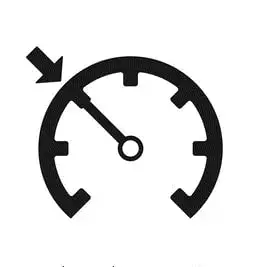
The new cars use the cruise control symbol instead of the text symbol. The new cruise control symbol replaces the word “Cruise Control” With a speedometer symbol and an arrow pointing to a set speed.
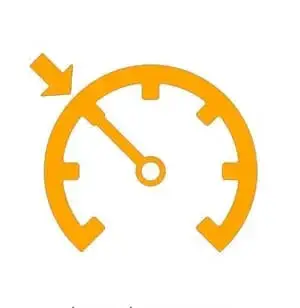
Cruise control uses two types of colors to show the state of the cruise control. The cruise control uses orange light when the cruise control stays on, but the speed has not been set yet.
Related Post: How Does Cruise Control Work: We Have The Best Answer
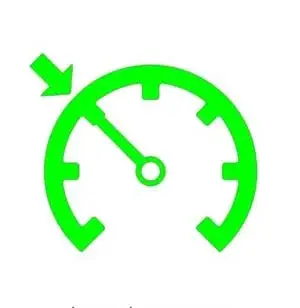
Once the cruise control speed is SET, the light turns green. So, a green light indicates that the cruise control has been set to the chosen speed.

Sometimes when the cruise control is turned ON and the cruise control speed is set, A SET indicator symbol appears on the instrument panel telling you that cruise control speed has been chosen.
Related Post: Does Cruise Control Save Gas
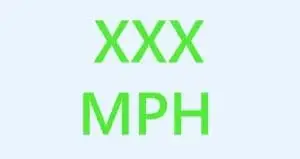
In some models, when you turn ON the cruise control, it gives a symbol to manually set the speed of the car. They are usually written MPH.
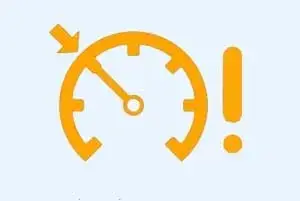
When a fault occurs in cruise control, an exclamation mark is added to the cruise control orange symbol.
There is a variation in cruise control signs showing fault in cruise control. But all variations inform the driver that the cruise control cannot be engaged.
Related Post: Adaptive Cruise Control System
About The Author
Related Posts
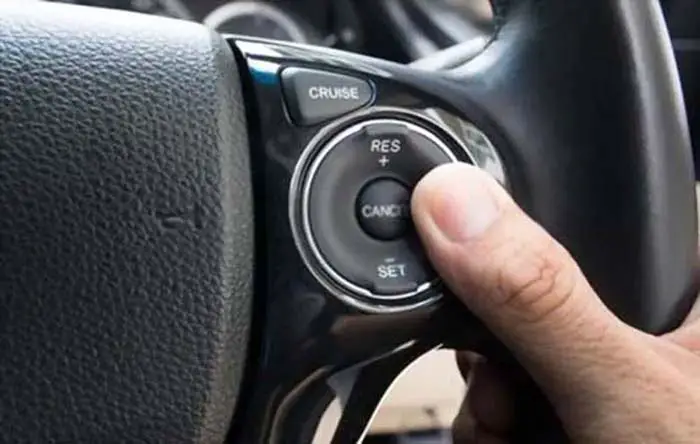
How To Turn OFF Cruise Control, When To Use It & When Not
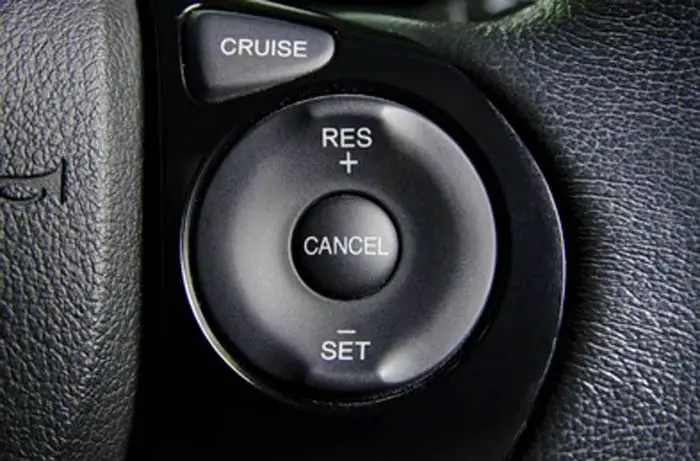
How Does Cruise Control Work: We Have The Best Answer
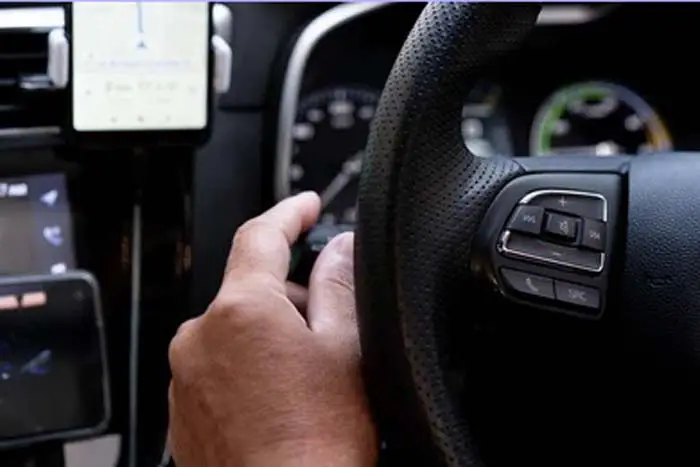
Advantages & Disadvantages Of Adaptive Cruise Control
Leave a comment cancel reply.
Your email address will not be published. Required fields are marked *
Save my name, email, and website in this browser for the next time I comment.
Cruise Control In Cars Explained (And How To Safely Use It)

Have you ever wished you could set your car's speed and just sit back and relax while driving on a long stretch of highway? If that's the case, then cruise control is just the ticket you've been searching for—and the good news is, it's a standard feature in most cars these days!
Cruise control is a handy feature for drivers that allows you to maintain a constant speed without having to keep your foot on the gas pedal. In this post, we'll explore how cruise control works, its benefits, and how to use it safely to make your driving experience more comfortable.
Understanding Cruise Control
Cruise control, also known as speed control, is an electronic system that allows you to maintain a specific speed without manually controlling the accelerator pedal. The system uses sensors and electronic components to control the throttle and keep your car moving at a desired speed. First introduced in the late 1950s, cruise control has since become a standard feature in most modern vehicles you see on the road today.
How Does It Work?
At its core, cruise control involves a series of sensors that monitor the vehicle's speed and a control unit that regulates the throttle. When the driver sets the cruise control to a specific speed, the system adjusts the throttle to maintain that speed. If the car begins to slow down because of an incline (e.g. going up a hill), the system will open the throttle to accelerate. Conversely, if the car starts to speed up due to a declin (e.g. going downhill), the system will close the throttle to decelerate.
Modern cruise control systems also come with additional features like adaptive cruise control (ACC), which uses radar or cameras to detect vehicles ahead and automatically adjusts the speed to maintain a safe following distance (more on this BELOW).
The History of Cruise Control
The invention of cruise control can be traced back to the late 1940s and early 1950s, when engineer Ralph Teetor developed the first-speed control system. This innovative feature was designed to help drivers maintain a steady speed, reduce fatigue while driving, and improve fuel efficiency. Over the years, cruise control technology has undergone significant advancements, leading to the development of sophisticated systems like adaptive cruise control.
Types of Cruise Control Systems
Today, drivers can choose from a range of cruise control systems, each with its own unique features and functionalities.
Conventional Cruise Control
Conventional cruise control is like your old reliable friend. It's pretty basic and doesn't have any fancy bells and whistles. You just set the speed you want, and it'll keep your car cruising along at that speed, no problem. It's perfect for those long drives on open highways, but it doesn’t automatically react to other cars on the road.
So, if the car in front of you slows down, you'll need to step in and adjust your speed manually. This trusty system comes standard on most cars and is great for saving some fuel on those long road trips .
Adaptive Cruise Control (ACC)
Now, if conventional cruise control is your old reliable friend, then Adaptive Cruise Control (ACC) is like that friend's tech-savvy younger cousin. ACC isn't just maintaining your set speed, it's also keeping an eye on the car in front of you. If that car slows down, ACC slows your car down to keep a safe distance .
It's like having an extra set of eyes on the road, making highway driving a breeze. Plus, some ACC systems can even handle stop-and-go traffic, bringing your car to a full stop and then picking up speed again when traffic gets moving.
Predictive Cruise Control
Predictive Cruise Control is like the fortune teller of cruise control systems. It uses GPS and map data to see into the future and predict what's coming up on the road, like hills or curves, and adjusts your speed accordingly. This means you get a smoother ride and better fuel efficiency, but it all depends on the quality of the GPS and map data. If that's a bit out of date, your fortune-telling cruise control might not be so accurate. It's usually found in more high-end vehicles where top-notch fuel efficiency is a focus for the engineers.
Cooperative Adaptive Cruise Control (CACC)
And then we have Cooperative Adaptive Cruise Control, or CACC. This is like the team player of cruise control systems. It allows cars to talk to each other, coordinating their speeds to maintain a safe distance. It's like having a well-coordinated team of cars all working together to make the traffic flow smoother and reduce congestion. Picture it like a synchronized dance on the highway, where every car knows its place and keeps the right distance. This tech is still pretty new, but it's got a lot of potential. Imagine a future where traffic jams could be a thing of the past.
Remember, these systems are here to make your drive smoother and safer, but they're not a replacement for your attention. No matter how fancy your cruise control is, these systems can be greatly influenced by external conditions like weather and traffic, and they should always be used as aids, not replacements, for attentive driving.
Common Cruise Control Symbols and Indicators
Understanding the various symbols and indicators associated with cruise control is important for safe and effective usage. These symbols typically appear on the dashboard (or on the side of the steering wheel) and may include a speedometer icon, "SET," "RES" (resume), and "CANCEL". Be sure to consult your vehicle's owner's manual for specific details and explanations of these symbols.
Benefits of Using Cruise Control
Cruise control offers several benefits to drivers, especially during long road trips or highway driving.
Fuel Efficiency
One of the main advantages of using cruise control is improved fuel efficiency. By maintaining a constant speed, cruise control helps reduce fuel consumption, leading to better gas mileage. Rapid acceleration and deceleration, on the other hand, can lead to increased fuel consumption.
Comfort and Convenience
Cruise control allows drivers to take their foot off the accelerator pedal, reducing fatigue and improving comfort during long drives. It also helps drivers avoid unintentionally exceeding the speed limit by setting a maximum speed.
When used correctly, cruise control can contribute to safer driving. By maintaining a steady speed, it reduces the likelihood of erratic driving behavior and potential accidents. However, it is important to note that cruise control shouldn't be used in certain conditions, such as heavy traffic or slippery roads .
Troubleshooting Common Cruise Control Issues
Occasionally, you may encounter issues with your cruise control systems. Common problems include cruise control not engaging or disengaging unexpectedly. Possible causes may include a faulty brake light switch, malfunctioning sensors, or issues with the control module. If you experience any problems with your cruise control, it's best to have a qualified technician diagnose and repair the issue for you.
Cruise Control and Road Etiquette
Practicing proper road etiquette while using cruise control is essential for a safe and pleasant driving experience. Here are some tips on how to use cruise control courteously:
- Avoid using cruise control in heavy or congested traffic, as it may hinder your ability to react quickly to changing conditions.
- Be mindful of other drivers when setting your speed. Avoid setting a speed that's significantly slower or faster than the flow of traffic.
- If you are in the passing lane and using cruise control, be sure to adjust your speed or temporarily disengage the system to allow faster-moving vehicles to pass.
- Always signal your intentions, such as lane changes or exiting the highway, even when using cruise control.
The Future of Cruise Control Technology
Cruise control technology plays a vital role in the development of autonomous vehicles, or self-driving cars . In autonomous vehicles, cruise control systems work together with other advanced driver assistance systems (ADAS) to enable the vehicle to operate without direct driver input. These systems include lane-keeping assist, automatic emergency braking, and collision avoidance systems.
As autonomous vehicles become more sophisticated, cruise control technology is evolving to support higher levels of automation. For example, some autonomous vehicles are equipped with advanced cruise control systems that can navigate complex traffic scenarios, merge onto highways, and even change lanes autonomously.
While fully autonomous vehicles are still in the developmental stages, the integration of cruise control technology is a big step toward creating safer and more efficient transportation systems.
As automotive tech continues to advance, cruise control systems are becoming more intelligent and capable. Here are some potential developments we can expect to see in the future of cruise control technology:
- Integration of artificial intelligence (AI) to improve decision-making and responsiveness in adaptive cruise control systems.
- Enhanced connectivity and vehicle-to-vehicle (V2V) communication, enabling cars to share information about traffic conditions and coordinate their speeds for smoother traffic flow.
- Greater customization and personalization options, allowing drivers to set preferences for cruise control behavior, such as following distance and speed adjustments.
Overall, the future of cruise control technology holds promise for creating a more seamless and enjoyable driving experience, with a focus on safety, comfort, and sustainability.
Debunking Myths About Cruise Control
Let's address and debunk some common misconceptions about cruise control:
Myth : Cruise control can be used as a substitute for driver attention.
Fact : Cruise control is a driver assistance feature, not a replacement for attentive driving. Drivers should always remain alert and ready to take control when necessary.
Myth : Cruise control increases the risk of accidents.
Fact : When used appropriately, cruise control can contribute to safer driving by maintaining a steady speed and reducing erratic driving behavior.
Cruise control is a valuable feature that can enhance your driving experience by providing comfort, convenience, and fuel efficiency. Remember to use it safely and appropriately based on driving conditions, and always stay attentive while on the road.
If you found this post informative and want to learn more about car features, driving tips, and automotive technology, be sure to subscribe to our newsletter for regular updates. We're here to help you stay informed and enhance your driving experience.
Frequently Asked Questions About Cruise Control
To further enhance your understanding of cruise control, here are answers to some common questions:
Q : Can cruise control be used in all weather conditions?
A : It isn't advisable to use cruise control in adverse weather conditions, such as heavy rain, snow, or icy roads, as it may reduce your ability to respond quickly to changing road conditions.
Q : Can I use cruise control in urban areas with frequent stop-and-go traffic?
A : Cruise control is best suited for open roads and highways with consistent traffic flow. It isn't recommended for use in urban areas with frequent stops or heavy traffic.
Q : Does cruise control work at any speed?
A : Cruise control typically has a minimum speed threshold, below which it can't be engaged. This threshold varies by vehicle, so check your owner's manual for specific information.
About the Author: This article was crafted by the LOOP Marketing Team. Comprising of seasoned professionals with expertise in the insurance industry, our team is dedicated to providing readers with accurate, up-to-date, and valuable information. At LOOP, we're passionate about helping families navigate the world of car insurance, ensuring they get the best coverage at the most affordable rates. Learn more about our mission and values here.
For more insights on auto insurance and other related topics, visit our blog .
Quick Navigation
Check out how much you could save today.
Browse related articles

Steer Across Borders: International Driving for Your Next Vacation

What’S The Process For Transferring My Car Title?

Everything You Need To Know About Car Titles
Life has many roads. your weekly navigator is just a click away..

28 Most Common Car Dashboard Symbols And Their Meanings
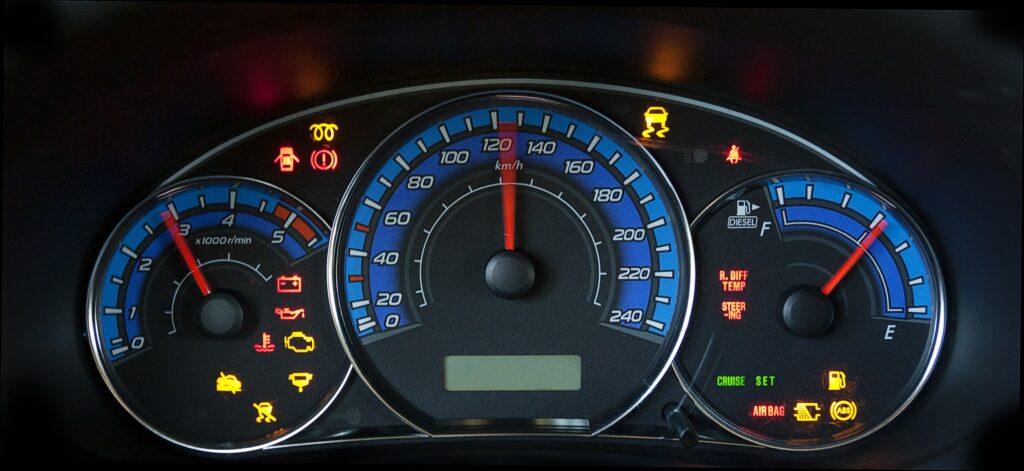
Do you know what all of those symbols on your car dashboard mean? You probably know some of them, like the one that means “oil change needed” or “check engine.” But what about the rest?
Most people don’t have a clue. In fact, according to a study by the National Highway Traffic Safety Administration , 60 percent of drivers in the U.S. can’t identify more than half of the warning lights on their dashboards. Yikes!
That’s why we’re going to take a look at some of the most common dashboard symbols and their meanings. So next time you’re driving and see one of these symbols light up, you’ll know what it means and won’t have to pull over and call a tow truck!
Understanding the Symbols on the Car Dashboard

Various icons on your dashboard may give the appearance of danger, but that is not always the case. In fact, some symbols are there to show you when certain features in your car are turned on. For example, there are symbols for lights and Cruise Control.
There are also safety warnings like Blind-Spot Monitoring and Lane Departure Warnings that pop up as well, and some others are related to mechanical issues like low tire pressure and engine temperature warnings. The only thing that matters is the color of the lights that appear on your vehicle’s dashboard symbols.
Green and Blue Light
Lights that are green and blue on the symbolic figure indicate that the particular system is usable and running as it should.
Orange or Yellow Warning Light
The presence of an orange or yellow warning light on the dashboard usually signals that maintenance or repair work is required soon. If you’re familiar with the urgency of a red and flashing light, you won’t find these alerts quite as alarming.
Red Light or Flashing
It’s time to act quickly if the warning light on your dashboard turns red. These indicators may serve as reminders to take safety precautions (such as fastening a seatbelt) or as alerts about the vehicle’s operation (like an overheating engine).
If the second situation applies, you should safely pull over to the side of the road to investigate. You might do further harm to your vehicle or have it break down if you keep driving with this issue.
Do All Cars Have the Same Symbols on Their Dashboards?
Not all vehicles use the same icons for their dashboards. The dashboard of a car may have a wide range of various indications and symbols, depending on the vehicle’s type and manufacturer. There may be brand-specific symbols on some automobiles. So, while you read this piece, please keep the following things in mind.
- Since every automobile is different, the icons on your dashboard may look different from the ones shown here. Consult your vehicle’s handbook if you’re unsure.
- When you initially switch on your car’s ignition, a number of the dashboard lights will come on for a few seconds. If the light goes out after a few seconds, then the system is functioning correctly.
Most Common Car Dashboard Symbols and Their Meanings
Here, you will be able to see a comprehensive list of the most common car symbols and their meanings. This way, the next time one of these appears on your dashboard, you’ll know what it means and can take care of the problem before it becomes more expensive.
Exhaust and Power Symbols
Lights and symbols on a car’s dashboard that pertain to the engine and emissions might indicate anything from mechanical damage to electrical problems with the emission system.
Decreased Engine Power

The “ Decreased engine power ” warning light comes on when there is a problem with the engine, and to protect the engine, its power output is reduced. So, this notification suggests the engine isn’t performing as efficiently as it should.
Low-Battery Signal
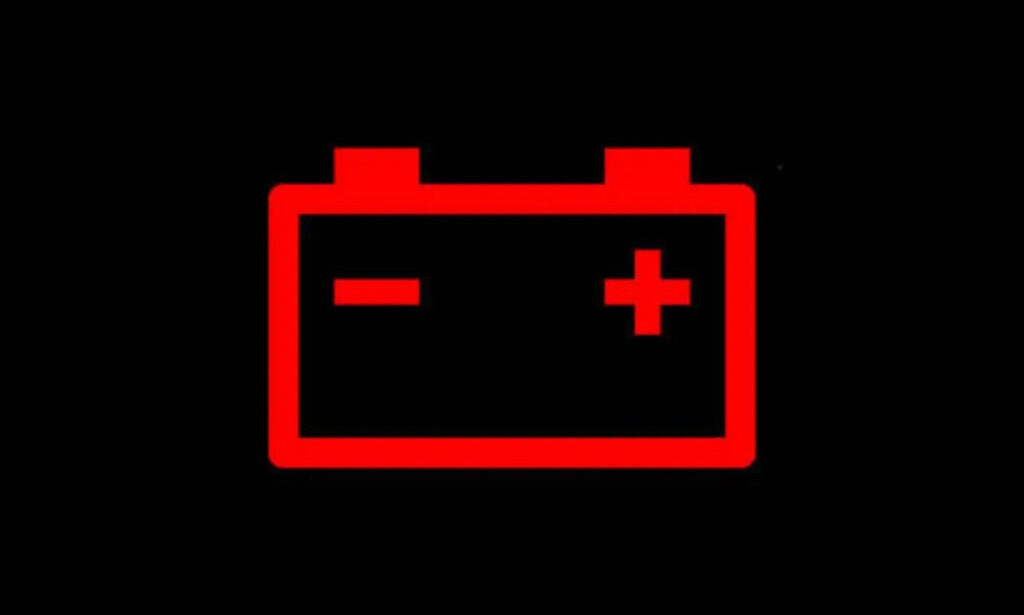
This warning light indicates a problem with the charging system in your vehicle. Fading clock lights or dimming headlights are further indicators that something is bad. It’s possible the automobile won’t turn over at all . A faulty alternator, a frayed battery cable, or any other electrical malfunction might be the source of the problem.
Insufficient Fuel
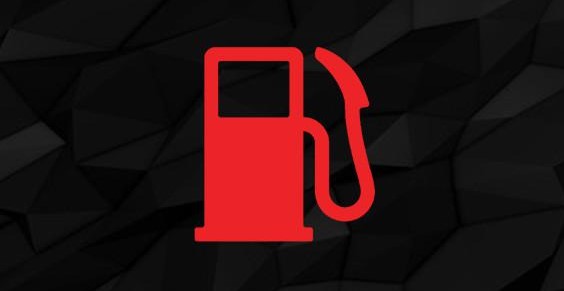
If the gasoline level indicator is flashing, you need to fill it up, or there’s a problem with the fuel sensor. You should always keep an eye on your gas gauge to avoid having to worry about having no petrol.
Flashing Check Engine Light

If your dashboard’s engine warning light is on or blinking, it means that there is currently some sort of problem with the engine. In order to communicate this message, either a sign representing the engine or the words “Check Engine” might be used.
The most common reason for a blinking light is due to misfires within the engine. However, other causes may be an open or loose gas cap, low oil pressure levels, or overheating.
The Primary Warning Signal

There’s probably an issue with your automobile if the primary warning light comes on in addition to the secondary warning lights. As such, it would be best to have a professional take a look at it as soon as possible.
Pressure & Temperature Indicators
The Pressure & Temperature Indicators on the car dashboard are important components for the safe operation of any vehicle. These indicators alert drivers to potential problems, such as low tire pressure or engine overheating, so that they can take corrective action quickly.
Fortunately, most modern vehicles come equipped with reliable pressure & temperature indicators that are designed to make it easy for drivers to keep track of their car’s performance.
Tire Pressure Indicator

The Tire Pressure Monitoring System (TPMS) symbol lets you know if there’s an issue with your tire pressure. This light has the form of three-quarters of a circle with an exclamation mark in the center. The little lines across the base represent tire tread.
- If the TPMS permanently solid, it means that the pressure in one or more of your tires is either too high or too low.
- If it flashes for 60-90 seconds once you’ve turned on your car and then stays illuminated, there might be something wrong with your TPMS sensors–even if your tires are properly inflated.
It’s risky and bad for your tires to drive about with low or excessive tire pressure. In any case, you should pull over as quickly as possible to get the tires to the right pressure.
Oil Pressure Indicator
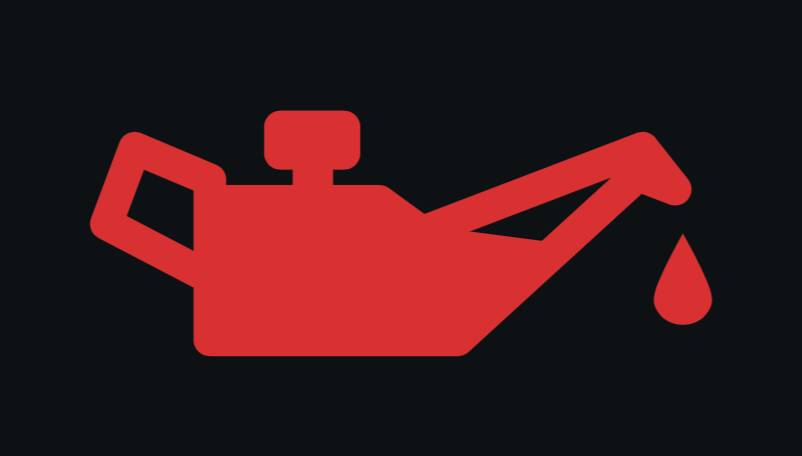
The greatest retro dashboard light is the oil can warning light with an accompanying oil drop. If this lighted pressure warning is on, it can mean that your automobile needs extra oil. More seriously, it may indicate that there is an engine leak or damage to components, such as a fractured piston ring or malfunctioning oil pump.
Check your car’s oil levels first; if that doesn’t work or if the light turns on shortly after you add more oil, have it checked out as soon as you can.
Warning Light for Low Oil
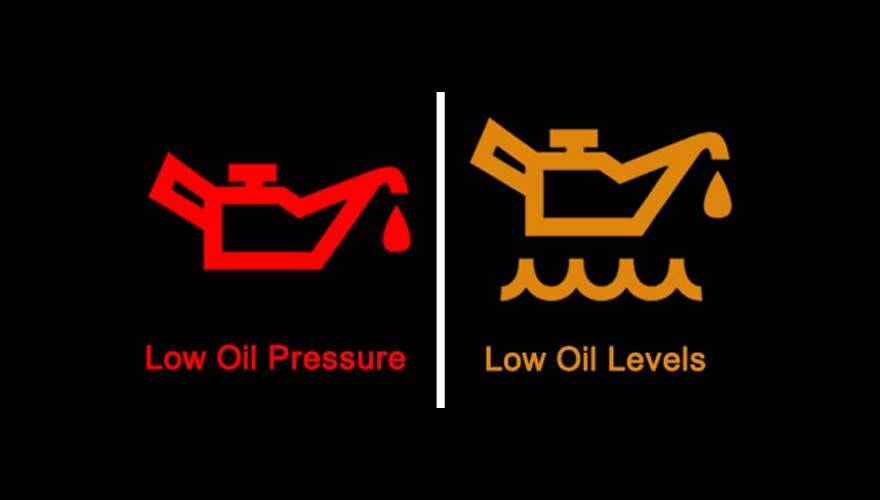
The low oil level indicator light on your dashboard is yellow, indicating that you should check the oil level in your vehicle’s engine. A damaged seal or defective sensor might be the source of a blinking or flashing light, both of which signal an even lower oil level.
Indicator for Coolant Temperature

The engine temperature warning light on the dashboard indicates that the engine coolant temperature is too high and that quick action is required to prevent further damage. Major engine damage can result from prolonged overheating if the problem is not addressed promptly.
Alert for High Transmission Temperature

This indicator is used to alert the driver that the transmission fluid level is running low. Many factors, including repeated use for heavy tugging and general wear and tear, might contribute to this issue.
If you ignore it, the transmission fluid in your automobile might overheat, which could cause serious problems. So, keep an eye on the transmission temperature and fluid level at all times when driving.
Icon for Low Coolant Level

When the antifreeze/coolant level in your automobile drops below a certain threshold, a float-type sensor will alert you with a warning light on your dashboard. The most likely culprits are the radiator, the radiator cap, the hoses (especially at the hose connection locations), and the water pump.
Safety Symbols
Never overlook a safety symbol – they are put there for a reason. They warn us about potential dangers that we might not be able to spot ourselves. If you see a red danger light, take it seriously. It could mean the difference between life and death in some cases.
Seatbelt Light
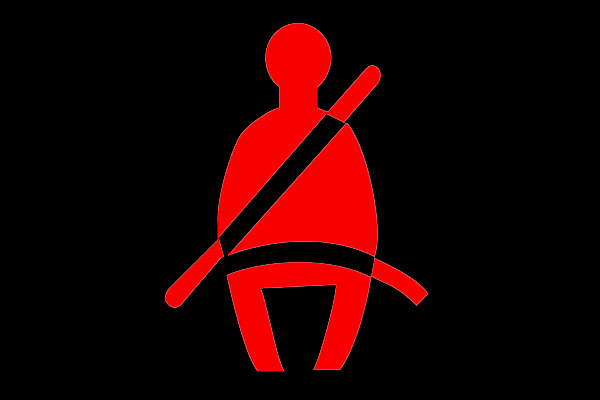
If you and your passengers have forgotten to fasten your seatbelts, this light is only a kind reminder. There is typically a constant ringing sound when this occurs. In some vehicles, you should also inspect the back seats.
The CDC report that the prevalence of major crash-related injuries is reduced by around half when passengers use seat belts. So, now fasten your seatbelts!
Warning for Cruise Control

The cruise control warning light appearing on your dashboard is an indication that there might be an issue with the cruise control or throttle system in your car. Cruise control not working can occasionally just mean the system isn’t engaged, but it could also indicate a problem with faulty sensors or wiring.
Regardless of the cause, this light coming on should always be taken seriously, as driving without cruise control can pose dangers. If you see this symbol while driving, do yourself and others a favor by taking the car to a qualified mechanic ASAP for them to check it out.
Light for Airbags (SRS Light )

The airbag warning light is a visual indication that there is an issue with the Airbag System. This may be caused by a malfunction in the system, or it may simply indicate that the system needs to be serviced.
Light for ABS (Anti-lock Braking System)
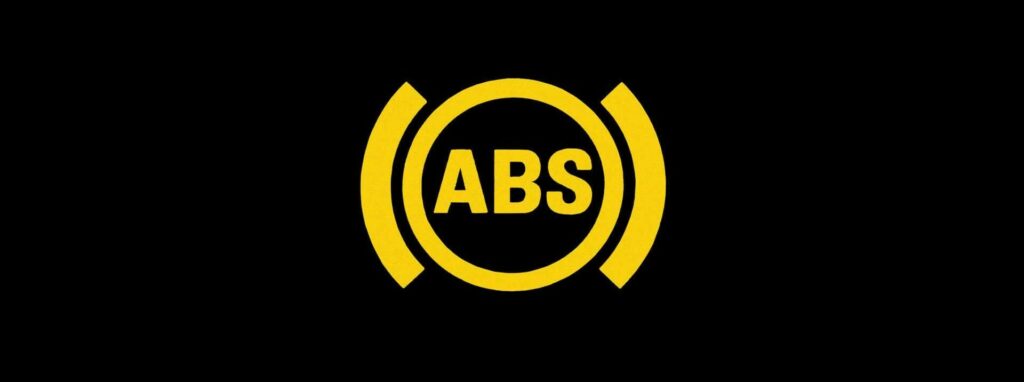
The ABS system prevents your wheels from locking up when you brake hard, such as on slick roads. If the ABS warning light is illuminated, it means that something is wrong with the system, and you should take it to a mechanic to be diagnosed as soon as possible.
Opened Door and Hood Icon
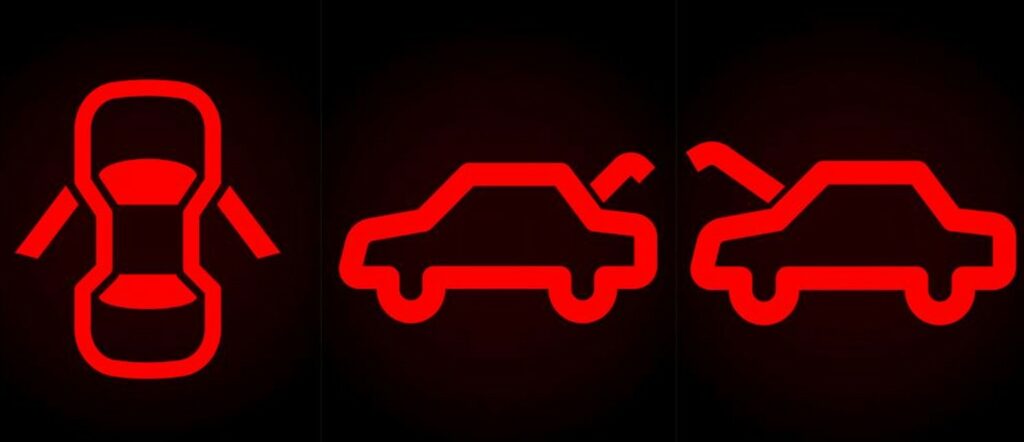
The Door Ajar Symbol is a notification that shows the status of a door. If you see this sign, it means that a door is either open or the door switch system isn’t working properly.
If the hood symbol is present, it means that it is not closed completely. High-speed driving with an open hood is extremely risky.
Automatic Shift Lock
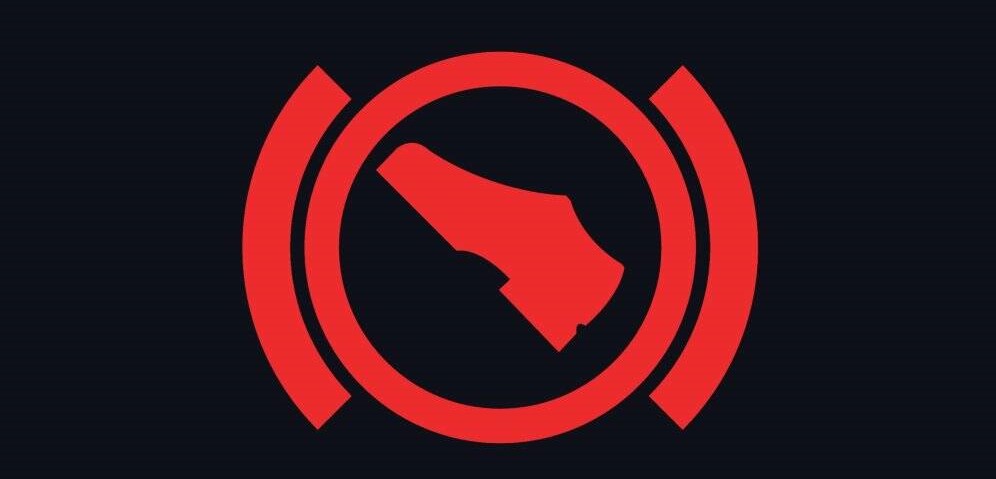
If you see this dashboard symbol, it means that you are trying to shift gears or start your ignition without first engaging the brake. The automatic shift lock will prevent your vehicle from moving out of the park or neutral until you engage the brake pedal. So, press the brake pedal down and then proceed to shift gears or start the ignition—whichever action you want to take.
Light for Faulty Traction Control
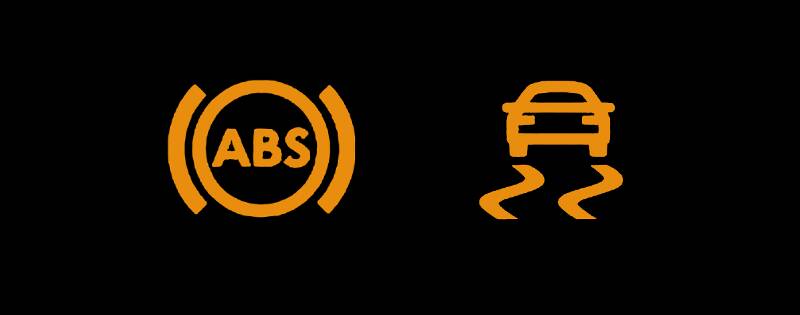
If you see this warning light, it might mean that there’s an issue with one of the sensors in the traction control system. Even though your car will be running well, you should get it inspected by a professional as soon as possible.
In some vehicles, the anti-lock braking system (ABS) and traction control share the same module, so if there’s a problem with traction control, you might also see the ABS warning light.
Light for Low Windshield Wiper Fluid
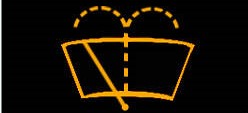
The windshield wiper-shaped icon on your dashboard is telling you that you’re low on windshield washer fluid. Be sure to fill up the reservoir as soon as possible.
Signal for the Brakes

The brake warning light is an indicator that something is wrong with the braking system. While it’s common to talk about a car’s 0-60 mph time, if the brakes don’t work properly and slow the vehicle down gradually and safely, things can get dangerous quickly. One common reason for this warning light to come on is if you try to pull away while the parking brake is still engaged.
Warning of Limited Slippage(Traction Control)
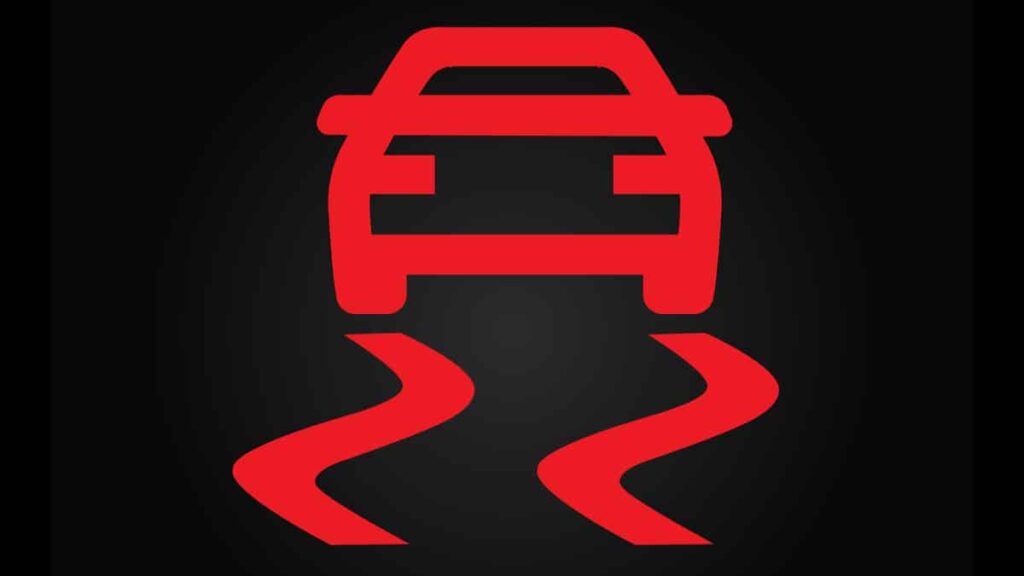
When you see this auto-icon, it means your car’s traction control is enabled. The ABS signal is used by the traction control system to identify if one wheel is spinning more quickly than the others. When it senses a wheel losing traction, it automatically applies the brakes. As an example, if you have to drive in the snow or rain, this can be a lifesaver.
Symbols for Lighting
The lighting system in your automobile is linked to several symbols, each of which conveys meaning through color. These hues, which might be blue, green, or yellow, are frequently used to denote features like turn signals and hazard lights.
Hazard Lights Icon

The hazard lights symbol means that the vehicle’s hazards are turned on. Hazards are warning signals that show other drivers that your car is either slowing down or stopped on the side of the road.
It’s important to remember that hazard lights have specific rules. Always use caution before turning on your hazard lights, and make sure you understand the law in your jurisdiction.
Indicator for High Beams
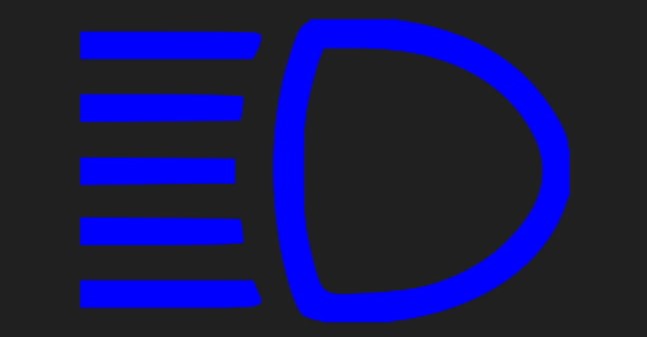
The high beam light on a car indicates that the driver has turned on their bright lights. High beams should be used when driving at night or in other conditions where visibility is limited. They provide more light than regular headlights, allowing the driver to see hazards further down the road.
Indicator for Low Beams
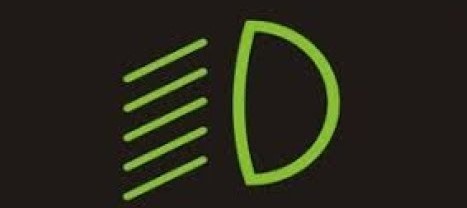
When you go to the low beam setting, the car’s headlights will shine downward. The dashboard’s low-beam light will illuminate to let you know. It’s a good idea to double-check this before setting out on the road, so you know which lights are functional.
Error With the Outside Lights
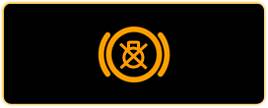
When an outside light goes out, the associated cautionary indicator will illuminate. It might be a problem with the front lights, the backlights, the turn signals, or the brake lights. In order to pinpoint the source of the problem, you need to test each external light individually.
If you need to change a bulb, look in your owner’s handbook for instructions. You should also verify the wattage of the lights to make sure they work with your car.
Indicator for Fog Lights

This symbol is to let you know that your front or back fog lights are in use. This may be useful when you can’t see well, like during a storm. In some vehicles, this might also show up when you’re using high-beam headlights too.
Defrost Indicator (Windshield & Rear Window)
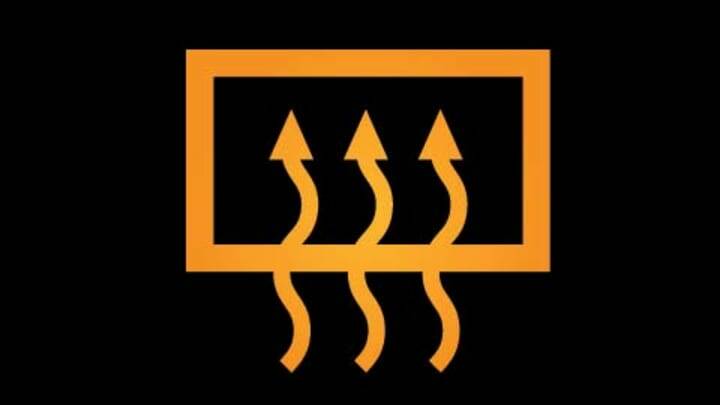
The defrost symbol appearing on your car’s display means that the windshield or rear window defrost is turned on. This feature clears fog and ice from your vehicle’s windshield or rear window. Depending on the make and model of the car, this symbol may look like a snowflake in a box, an arrow pointing up with a line underneath it, or a fan-like shape.
Conclusion
Once you learn to decode the information your car’s dashboard displays, you’ll have a far clearer picture of what’s going on with your ride. You’ll be safer on the road and could even be able to cut costs on auto maintenance by learning this.
Do you have any thoughts or experiences to share about this topic? We’d love to hear from you in the comments below!
Frequently Asked Questions (FAQs)
What symbol is low tire pressure.
The Tire Pressure Monitoring System (TPMS) indicator on your dashboard is easy to spot if you know what you’re looking for. It resembles a horseshoe with an exclamation point in the center, and it tells you that one or more of your tires has low pressure.
What are C and H in cars?
The car’s temperature gauge is there to tell you if the coolant system in your vehicle is working as it should. The needle on the dial should always stay between ‘cold’ (C) and ‘hot’ (H). If it goes below or above the midpoint, then something isn’t right.
Related Posts
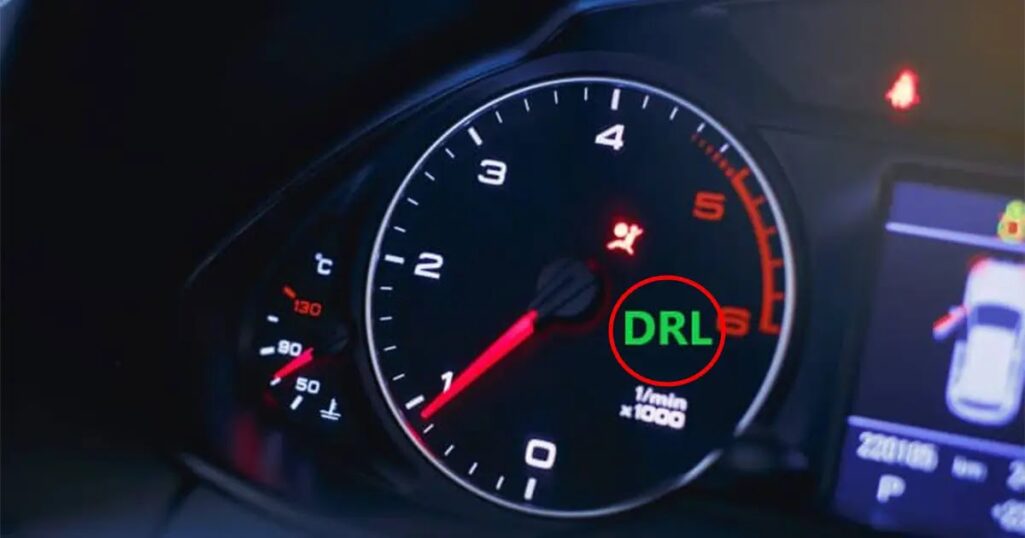
Cruise Control Symbol: All You Need to Know
Seeing a cruise control symbol on your car dashboard and wondering about its meaning.
In this article, I will explain all you need to know about the cruise control system, including the meaning of the cruise control symbol and how to use the system properly.
What Is Cruise Control?
Cruise control is an electronic system that enables you to maintain a constant speed without keeping your foot on the accelerator.
Cruise control provides convenience and reduces driver fatigue during long trips. Additionally, by maintaining a consistent speed and eliminating unnecessary acceleration and deceleration, the system also helps improve fuel efficiency .
What Does the Cruise Control Symbol Mean?
The cruise control symbol indicates that the cruise control system is engaged and maintains the set speed . The symbol may also change color or blink to indicate different states or potential issues with the system.
Note that the symbol may vary between different car makes and models. Enter your brand in the search box for detailed information about your cruise control system.
How to Use the Cruise Control Effectively
You can activate the system by pressing the cruise control button on the steering wheel. Thus, set the desired speed (using controls on the steering wheel). The system will automatically monitor the speed and adjust the throttle to maintain that speed. Remember to remain attentive and be ready to take manual control even when using cruise control.
You can also deactivate the system by applying the brakes or pressing the cancel or off button on the steering wheel.
Cruise control is best utilized in specific driving conditions, such as on highways or flat roads with low traffic. However, it should not be used in the following situations:
- Heavy Traffic : In congested traffic conditions, you need full control of your vehicle, including speed adjustments and braking. Cruise control can impede your ability to react quickly to changing traffic conditions.
- Curvy or Hilly Roads : Cruise control may not be suitable for roads with sharp curves or significant changes in elevation. Manual control allows for better handling and adaptation to the terrain.
- Slippery or Icy Conditions : Avoid using cruise control on slippery surfaces or in inclement weather, as it may hinder your ability to make immediate adjustments to maintain traction or handle unpredictable road conditions.
What’s Next?
Cruise control is useful for maintaining a steady speed during long drives. By understanding the operation of the system and how to use it effectively, you can enhance your driving experience and safety.
We’d love to hear about your experiences with cruise control. Leave a comment below and share your thoughts!
Share this article
Related Posts
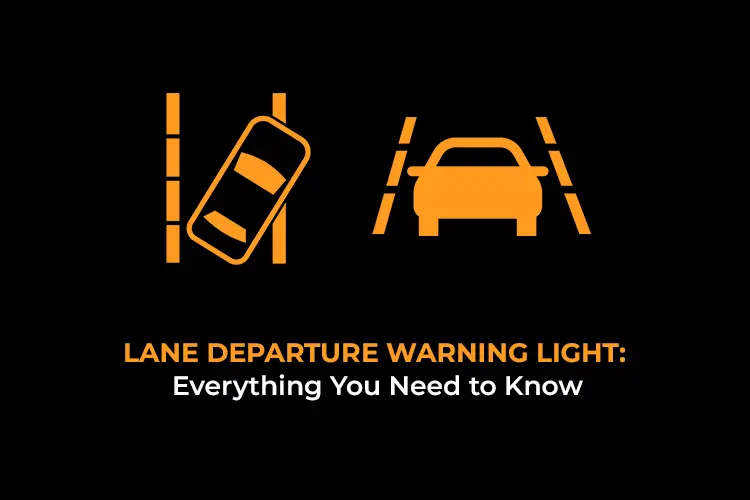
Lane Departure Warning Light: Everything You Need to Know
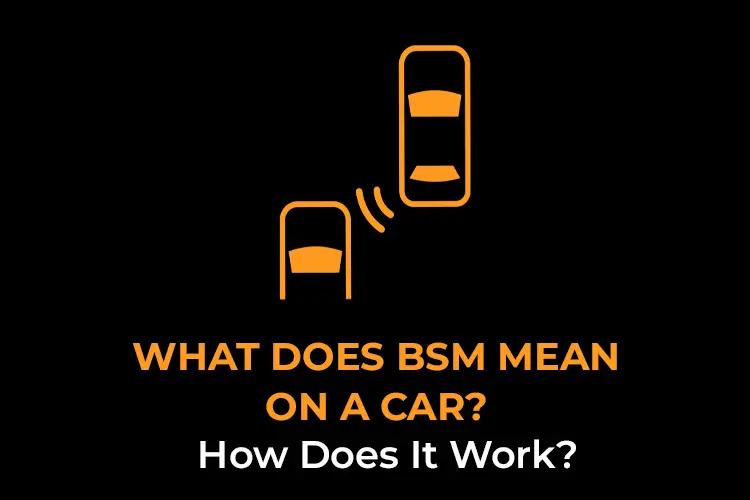
What Does BSM Mean on a Car? How Does It Work?
Leave a comment cancel reply.
Your email address will not be published. Required fields are marked *
Save my name, email, and website in this browser for the next time I comment.
Recommended for you
Abs light on the toyota camry: 5 causes and how to fix it, bmw emergency call malfunction: 5 causes and how to reset, adaptive headlight malfunctions on bmw: here is how to fix, start typing and press enter to search.
We are searching for --
Please wait. This should take only a few seconds.
Sorry! We could not find the results.
This VIN is corresponding to more than one vehicle
Please choose the vehicle you want values for from the list below:
What All the Symbols on Your Car’s Dashboard Mean

In this post
The most common symbols on your car’s dashboard, always know your car’s safety systems.
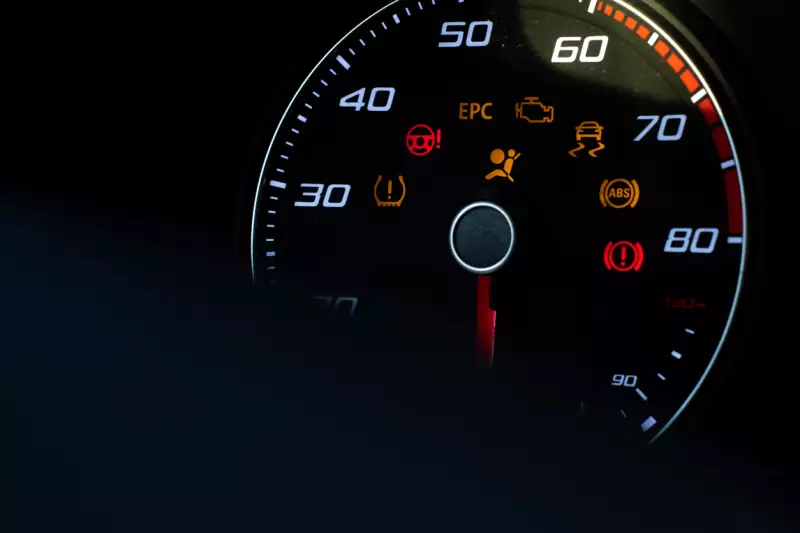
It's crucial for drivers to understand the numerous icons and symbols that appear on the dashboard display of their vehicles. These symbols may signify a range of significant information, from a straightforward reminder to buckle up to a more serious issue with your car's engine or brakes. Understanding the significance of these signals will help you stay informed and take the required steps to protect your safety and the overall health of your car.
The experts at GoodCar want to be sure that you know some of the most common symbols you might see on your car's dashboard, along with their meanings. So, buckle up - let’s go!
- Seatbelt Reminder – This symbol often resembles a person wearing a seatbelt and shows that the computer in your automobile has noticed that one or more passengers have not yet buckled their seatbelts. For your own protection, this indicator serves as a reminder to buckle up.
- Low Fuel Warning – This symbol typically resembles a gas pump and lets you know when your car's gasoline level is low. Depending on your vehicle, the alert can turn on when you have between 30 and 100 miles of remaining range. To avoid running out of gas and perhaps harming your engine, it's crucial to fill up as soon as you can.
- Check Engine Light – This indicator, which often resembles a yellow or orange engine, denotes an issue with your car's emissions control system or engine. Simple problems like a loose gas cap or more significant ones like a broken sensor might be the cause. In order to stop any more damage, it's crucial to get your automobile assessed and fixed as quickly as possible.
- Oil Pressure Warning – This symbol often resembles an oil can with an oil droplet coming out. It signifies that there is an issue with the oil pressure in your automobile. Low oil levels , a broken oil pump, or a clogged oil route might all be to blame for this. To avoid catastrophic engine damage, it's crucial to get your automobile evaluated right away.
- Battery Warning – This battery-like icon signifies that the charging mechanism in your automobile is malfunctioning. A defective alternator, a weak battery, or a loose or corroded connection might all be to blame for this. To avoid having your car's battery die and maybe leaving you stranded, it's crucial to get it examined as soon as possible.
- Brake Warning – When you see this sign, which usually resembles an exclamation point inside of a circle, your car's braking system is malfunctioning. This could be brought on by brake sensor issues, brake line leaks, or worn brake pads. To ensure that your brakes are working correctly and to prevent any possible mishaps, it's crucial to have your automobile tested right away.
- Tire Pressure Warning – This indicator, which usually resembles an exclamation point within a tire, shows that one or more of your car's tires are underinflated. This could be brought on by a hole, a leak, or just everyday wear and tear. To avoid a blowout or other tire-related issue, it's critical to periodically check your tire pressure and to get any leaks or punctures fixed as soon as possible.
- Temperature Warning – This symbol, which looks like a thermometer submerged in water, signifies that the engine of your automobile is overheating . A broken thermostat, a clogged radiator, or a cooling system leak might be to blame for this. To avoid catastrophic engine damage, it's crucial to get your automobile evaluated right away.
- ABS Warning – This symbol looks like the letters ABS inside of a circle, and it indicates that there is a problem with your car's anti-lock braking system. This can be brought on by a sensor that isn't working, a bad pump, or a broken wheel speed sensor. It's crucial to get your vehicle inspected right away to confirm that your ABS system is in good working order.
- Airbag Warning – This sign, which resembles a person sitting down with an airbag inflated in front of them, denotes an issue with the airbag system in your automobile. A defective airbag, a malfunctioning control module, or a malfunctioning sensor might be to blame for this. It's crucial to get your automobile tested right away to make sure your airbags are operational and to prevent any potential safety issues.
- Traction Control – This symbol, which resembles a vehicle with wavy lines behind it, shows that the traction control system of your automobile is on. While driving in slick or rainy weather, the traction control can be useful in preventing wheelspin during acceleration.
- Cruise Control – This symbol typically looks like a car with a speedometer in front of it, and it indicates that your car's cruise control system is engaged. Cruise control allows you to maintain a steady speed without having to constantly adjust the accelerator pedal.
- High Beam – This sign, which resembles a headlight with beams emanating from it, shows that your car's high lights are on. In low light, high beams increase visibility, but they should only be used when there are no other cars around to prevent blinding other drivers.
- Low Beam – Your car's low beams are on when this symbol, which resembles a headlight with a line coming out of it, is shown. Low beams should be utilized at night or in poor light since they offer sufficient vision in the majority of driving situations.
- Fog Lights – This indicator, which resembles a headlight with wavy lines in front of it, shows that the fog lights on your automobile are on. In foggy or misty circumstances, fog lights increase visibility.
- Turn Signals – Your car's turn signals are in use when you see one of these symbols, which typically resemble arrows pointing left or right. Turn signals are crucial for communicating your desire to change lanes or make a turn, and you should always use them to warn other motorists.
- Hazard Lights – This sign, which resembles two triangles crossing over, shows that the warning lights on your automobile are on. Hazard lights should only be used in emergency situations to warn other vehicles of a possible hazard, such as a disabled car on the side of the road.
- Parking Brake – The parking brake on your automobile is engaged when this sign, which often takes the form of a circle with an exclamation point inside it, is shown. While parking on an incline or drop, the parking brake should always be applied to prevent the rolling of the vehicle.
You can stay informed about the condition of your car by knowing what these symbols signify and making sure you take the proper action when it's required. In order to prevent any potential safety hazards and to save expensive repairs down the road, it's crucial to get your automobile examined by a trained mechanic as soon as you see a warning symbol or indicator light on the dashboard.
There may be more warning indications or symbols on your car's dashboard in addition to these that are unique to your vehicle's make and model. Keep your vehicle's owner's manual in your car at all times for quick access since it should thoroughly describe all dashboard symbols and their meanings.

A crucial component of being a responsible and safe driver is comprehending the symbols and signs on your car's dashboard. Understanding these symbols and what they represent will enable you to take the proper action as required and keep yourself informed about the condition of your car .
Whenever you see a warning symbol or indicator light on your dashboard, always get your automobile examined by a trained technician to avoid any potential safety hazards and to make sure it is operating correctly. It’s always better to be safe when out on the road!
Related Articles

How To Buy A Car With Cash: Pros And Cons

What Is Doing Donuts In a Car and Is It Illegal?

What is a Fender Bender and How to Handle One
Recent articles.

What Is A Tire Rotation? Why and How Often to Rotate Tires

What is Limp Mode? Signs, Causes, and How to Fix It

Car Modifications: Types, Techniques, and Trends
Free vehicle search.
- Problem Checks
- Title Records
- LICENSE PLATE

What 18 Symbols On Your Car’s Dashboard Mean
By nick greene | jun 7, 2023, 1:04 pm edt.

When something goes wrong with your car , or if a feature you should know about gets activated, a signal funnels through the electrical system and into the dashboard. This illuminates a symbol on the dash, and these cover a wide range of issues—some of which may be serious. Here are the meanings behind 18 of these curious-looking markers (and what they look like, in case you need a reminder.)
Your dashboard may be different and the symbols may have altered designs or indicate slightly different things, so be sure to consult your owner’s manual. Some of these lights could portend a serious malfunction . Don’t ignore them. When in doubt, have a professional check it out.
Table Of Contents
1. engine temperature warning light, 2. tire pressure warning light, 3. oil pressure warning, 4. traction control, 5. engine warning, 6. anti-lock brake warning, 7. rear window defrost light, 8. battery alert, 9. fuel indicator symbol, 10. seatbelt reminder light, 11. airbag indicator, 12. fog lamp indicator, 13. air suspension warning, 14. lane departure warning, 15. washer fluid indicator, 16. cruise control indicator, 17. lamp out warning, 18. brake pad warning.
What it looks like: A pirate ship with its sails down as if to say, “I’m just a normal boat, no pirates here.”
What it means: Your engine is too hot, friend. Here is a useful guide for what to do if your engine overheats.

What it looks like: A Buckingham Palace guard telling you the field goal is good !
What it means: The pressure in one or more of your tires is too low and needs to be attended to.
What it looks like: You’re about to get three wishes.
What it means: Your engine is running low on oil, or there is a problem with your car’s oil pressure system.
What it looks like: Cthulhu wearing a fedora.
What it means: The car’s traction control system is engaged.

What it looks like: Yellow submarine, a yellow submarine, a yellow submarine.
What it means: It can blink on to warn you of a number of issues , from minor (a loose gas cap) to major (wiring problems).
More Articles About Cars:

What it looks like: The cover of a fitness magazine.
What it means: There is an issue with your anti-lock brake system that needs to be diagnosed and fixed.
What it looks like: An aerial view of snakes slithering through windows into your house.
What it means: The rear-window defroster is engaged, so any condensation should clear up in a jiffy.
What it looks like: Math LEGO .
What it means: The car’s charging system is short of power. You are running solely off the battery.
What it looks like: A snake-infested ATM.
What it means: You are running low on fuel. Also: the symbol on the fuel gauge has an arrow next to it—this indicates which side of the car has the gas cap. No more gas station three-point turns in rental cars ever again!
What it looks like: Zorro if he messed up drawing his initial with his sword.
What it means: Buckle your seatbelt , please.
What it looks like: A man sitting calmly in a lawn chair gazing at the sunset.
What it means: There may be an issue with one or more of your car’s airbags, or the airbag system in general.

What it looks like: A jellyfish leaping through a waterfall.
What it means: Your fog lights are on.
What it looks like: Your bass is so loud your car bounces up and down.
What it means: There’s a problem with the car’s air suspension system, which includes inflatable bags meant to make the rider smoother.

What it looks like: A Mayan pyramid.
What it means: You seem to be drifting out of your lane unintentionally—get your eyes on the road!
What it looks like: A conductor’s point of view, tapping her music stand and preparing to lead an orchestra consisting of two candy canes that are stuck together.
What it means: The washer fluid level is low. Please fill that up when you get a chance.
What it looks like: A sundial indicating 10 a.m.
What it means: You’ve turned on cruise control. When the light is orange, it's waiting for you to set the preferred speed. When it turns green, you’ll be traveling at that speed.
What it looks like: A shiny gold medal from the Shouting! Olympics!
What it means: One of the car’s lamps—the headlight, taillight, or other exterior light—has burned out. You should probably get the bulb replaced before you get a ticket.
What it looks like: You’re staring down the drain of your kitchen sink.
What it means: The car’s brake pads are getting too thin. Time to get them inspected and replaced.
A version of this story ran in 2016; it has been updated for 2022.

What All Those Dashboard Lights on Your Car Actually Mean

Article by: Craig Lloyd @craiglloyd
- June 18, 2019
- Filed under: How Tech Works
Ever notice your car’s instrument cluster lighting up like a Christmas tree when you start it up? All those lights and symbols tell you what your car is up to and, more importantly, if something is wrong.
When your car starts up, most of those lights should automatically turn off—those initial blinks are actually a quick test to make sure they work properly. If one stays lit and you aren’t quite sure what it’s saying, read on.
Note that while most lights and symbols are universal, your particular vehicle may not have some of them, or might use a slightly different symbol for a specific warning. Either way, be sure to take a look at your car’s owner’s manual for details on a particular warning light or symbol you come across.
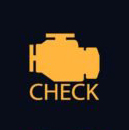
Malfunction Indicator Lamp: More colloquially known as the “check engine” light, this symbol lights up when there’s something wrong with your car, chances are good this is the symbol that lights up. The check engine light covers a wide gamut of issues that could pop up at any time—it could just be a loose gas cap, or a faulty mass airflow sensor . Mechanics diagnose these by using OBD-II scanners, but you can easily buy one for under $20 and figure out the problem yourself.

Fuel Gauge Symbol: This light sits near your fuel gauge, but did you know the small arrow next to the symbol actually means something? It points to the side of the vehicle that the gas cap is on. You probably already know where the gas cap is on your vehicle, but when driving a rental car or a friend’s car, it’s handy to know.

Battery Warning Light: While this symbol looks like a car battery, it’s really warning you about the recharging system that keeps your battery juiced up, not the battery itself. This could mean there’s corrosion on the battery terminals preventing the battery from accepting a charge, or it could be a more serious problem, like a failing alternator .

Oil Pressure Warning Light: When this lights up, it means the engine isn’t circulating oil effectively. You could be low on oil (which could point to a leak) or the oil pump may have failed. Either way, you’ll want to stop driving and pull over immediately if this light comes on, because inadequate oil flow can destroy the engine beyond repair if continued to be driven. Some cars also have oil pressure gauges that display what the oil pressure is at all times.

Temperature Warning Light: If this lights up, it means the engine is overheating and you’ll want to stop driving and pull over right away, as excessive heat can destroy an engine. When an engine overheats, there is a problem with the cooling system. The most likely suspects are the radiator (or the radiator fan), water pump , or thermostat . Many cars have temperature gauges that display the engine’s temperature at all times.
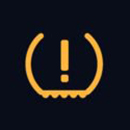
Tire Pressure Warning Light: If your car has a tire pressure monitoring system (TPMS), it can alert you to low tire pressure in any one tire. Changes in air temperature can have an effect on tire pressure, and your tires slowly lose a little pressure every few months. So it’s always a good idea to check the tire pressure every so often and top it off. If the light keeps turning on, you may actually have a leak somewhere .

ABS Warning Light: ABS stands for anti-lock braking system, and most modern vehicles come equipped with it. It’s there to prevent your wheels from locking up under heavy braking. When this light comes on, your ABS system could have a failed sensor, or a problem with its own computer module. The brake system will still work, but the ABS needs to be checked out.

Overdrive Symbol: Overdrive is the highest gear available in your car’s transmission. It’s used when traveling at cruising speeds to save fuel by lowering the RPMs. It can be turned on and off, so when you see this symbol illuminated in the instrument cluster, it means that overdrive is on and can be utilized. Some cars will instead have a “O/D Off” symbol that stays illuminated whenever overdrive is not in use.

Electronic Stability Control Symbol: Depending on your car, Electronic Stability Control (ESC) can be manually turned on and off, or activated automatically. Either way, this light comes on when your car’s computer detects a loss of traction. Once that happens, the car will strategically adjust engine power and engage the brakes in order to regain traction. Whenever this happens, the ESC light will light up. If it can be turned on and off manually, this light will stay illuminated when ESC is on.

High Beams Symbol: This typically blue light (sometimes green) means your headlights’ high beams are turned on, and are probably blinding other drivers that you’re passing by on the road—turn them off when you don’t need them, or if you see another car’s headlights coming in the opposite direction.

Cruise Control Symbol: This light illuminates whenever cruise control is activated. Your car may also have a separate light indicating that the cruise control feature is on and ready to be activated, sometimes denoted by a separate “CRUISE” symbol in the instrument cluster, or just a small LED light on the button itself.

Economy Mode Symbol: Many fuel-efficient vehicles will have an “ECO” symbol that lights up letting you know your car is operating at peak fuel efficiency. Some cars are even advanced enough to automatically disable engine cylinders once you’re at a steady cruising speed. In other vehicles, you can manually turn on and off Eco Mode.
Did we miss anything? Have a weird story about an engine light nightmare? Let us know in the comments, or find us on social media! Until next time, happy fixing!
Title image by kecko /Flickr

Mahi Driver Kit
Fix larger devices, appliances, and cars with 48 heftier ¼” bits.

Digital Multimeter
Versatile multimeter with all the right functions for basic electronics troubleshooting.

How to Fix Christmas Lights

Car Talk Host, Tom Magliozzi, Passed Away

‘Car Talk’ Thinks Repair Is Noble, Too
The tire pressure warning light on my 2007 Prius started flashing for one minute, then staying on solid. Pressure was good in all tires. A bit of research revealed that the sensors in the wheels contain a battery with a 7-10 year life. The dealer wants $1,000 to change all 4 sensors, so I am going back to frequent pressure testing, which is what we did before TPMS. If I keep the car long enough to buy new tires I will buy new sensors and have them installed during tire replacement. Otherwise I may resort to the tried and true “Black tape over the light” fix.
jimstutsman - Jun 22, 2019 Reply
Jimstutsman-I have the same issue with the tpms symbol. Mine is off in the summer and on solidly in the winter with the cold weather change. The tire pressure is not the problem it is because the batteries in the sensors are going. I also, said no way to the hefty price tag to change them. There is a way to change them yourself. You can buy a tpms programmer and the replacement sensors. It’s a lot of work and I have decided to just check the air pressure as needed too. The diy cost for me for all 4 tires would have run about $200 though if anyone was curious.
Donna Smith - Jun 22, 2019
Read the vehicle’s owner manual for correct information o the TPMS. My wife’s 2009 Chevy Equinox has a simple procedure to relearn all the sendors, since I have to do it after every tire rotation or replacement. No tool is needed!
rayramirez - Jun 22, 2019 Reply
May I add that in my last 2 vehicles a warning indicator indicating failure of the ESC system was actually caus3d by the battery going flat. So while the Battery Warning Light may not be a reliable indicator to change your battery, the ESC fault indicator can be!
Damon Schultz - Jun 22, 2019 Reply
Ohhhh wow what a dummy
Gurl - Jun 24, 2019 Reply
Add Comment
The 89 Most Common Symbols On Your Car’s Dashboard
- Updated: March 21, 2024
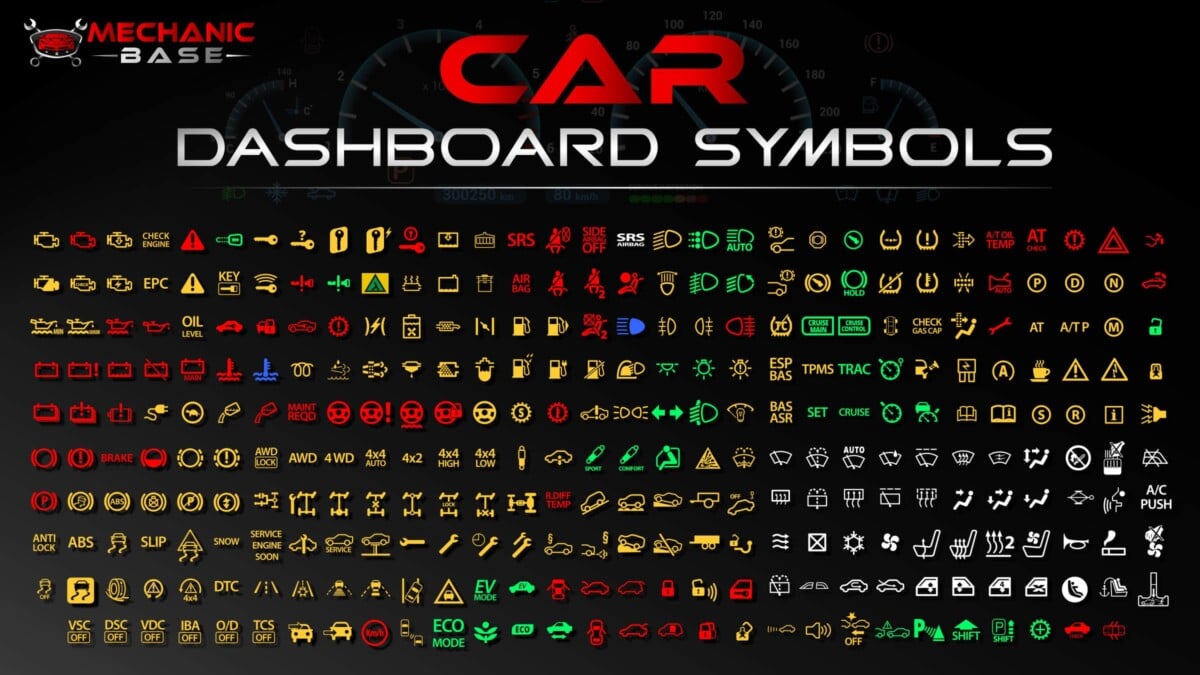
We’re all familiar with that moment of uncertainty when a warning light flashes on our car’s dashboard. It leaves us scrambling for the manual, attempting to decipher what the illuminated symbol signifies.
In this article, we will guide you through the top 89 most common car dashboard symbols and their meanings, empowering you with knowledge for the next time a warning light appears. By recognizing what these lights indicate, you can sidestep expensive repairs in the future.
Some dashboard symbols and warning lights are more common than others. Some are specific to certain car brands, while others will be seen on most car models on the market. We will begin by showing you the most common dashboard symbols that can be found in most car brands.
Here is a list of the dashboard symbols, and you can click on each name to get more information about the specific warning light.
Engine & Emission
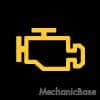
1. Check Engine Light
A Check Engine light indicates an issue with the engine or the emissions. It can be shown either as an engine symbol or as plain text reading “Check Engine”. Read More
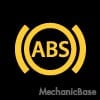
2. Anti-lock Braking System
An ABS light indicates there is an issue with your anti-lock brakes or Anti-lock braking system (ABS). Read more

3. Airbag Indicator
An airbag light means that there is an issue with the airbag system. The airbags will not deploy in an accident with the light on. Read more
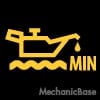
4. Oil Level Warning Light
A yellow oil level warning light indicates a low engine oil level. The oil level should be checked as soon as possible. Most likely due to an oil leak.
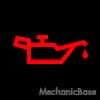
5. Oil Pressure Warning
A red oil pressure light indicates low oil pressure in the engine. Your engine should be switched off immediately to avoid damage when the oil pressure warning light shows. Read more
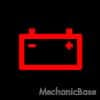
6. Battery Charge Warning
A battery charge warning symbol means that the generator is not charging the battery properly and that your engine is at risk of shutting down due to low battery capacity. Read more
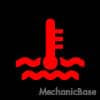
7. Coolant Temperature Warning Light
An engine temperature warning light means that the engine coolant temperature is high and that the engine should be turned off immediately to avoid further damage. Read more
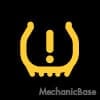
8. Tire Pressure Warning Light
A tire pressure warning light indicates low air pressure in one or more tires. It can also be caused by a faulty or uncalibrated tire pressure sensor. Read more
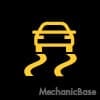
9. Traction Control/ESP Light
An ESP or Traction control light indicates an issue with the traction control system. Your traction control system will not work when the light is on, and this can be dangerous. Read More
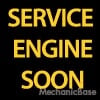
10. Service Engine Soon
A Service Engine Soon message indicates minor trouble with the engine or low fluid levels. Read more
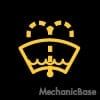
11. Low Washer Fluid Light
A washer fluid symbol means that the windshield washer fluid level is low or has incorrect measurements.
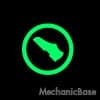
12. Automatic Shift Lock Symbol
An automatic shift lock symbol indicates the brake pedal is not pressed. The car will not start, and the shifter won’t move out of Park.
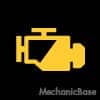
13. Reduced Engine Power
A Reduced engine power car light means that there is an issue with the engine and the power is reduced to protect the engine. Read more
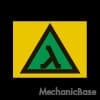
14. Lambda Warning Light
A lambda warning light indicates there is an issue with the air-fuel mixture or an issue with the oxygen sensors. This light is more common in older car models.
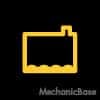
15. Low Coolant Indicator
A low coolant warning light indicates there is a low coolant level in the coolant reservoir or an issue with the coolant level sensor. Check for leaks around the radiator, radiator cap , coolant hoses, or water pump.
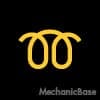
16. Glow Plug Indicator (Diesel)
A glow plug symbol indicates there is an issue with the glow plugs or the glow plug control system.

17. Fuel Filter Level Warning
A fuel filter level warning light means that the water-trap in the fuel level is full and needs to be emptied.

18. Power Steering Level Symbol
A power steering level warning light indicates the power steering fluid level is low, or there is an issue with the level sensor.
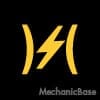
19. Electronic Throttle Control Light
An electronic throttle control (ETC) warning light indicates there is an issue with the engine’s electronic throttle body or the system.
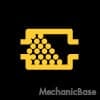
20. Particle Filter Warning (Diesel)
A diesel particulate filter warning light indicates there is an issue with the diesel particulate filter system (DPF), or that the particle filter is full and needs regeneration or replacement.
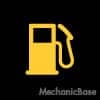
21. Low Fuel Level
A low fuel level symbol means that the fuel tank level is low or that there is an issue with the fuel level measuring system. There could also be an arrow, indicating which side your gas cap is on.
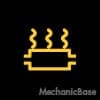
22. Catalytic Converter Warning
A catalytic converter warning light indicates there is an issue with the catalytic converter control system, or the catalytic converter is damaged.
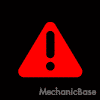
23. Master Warning Light
A master warning light normally shows up together with another warning light and means that there is an issue with your car. Let a mechanic take a look.
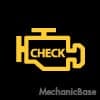
24. Blinking Engine Light
A blinking or flashing engine light indicates there is an issue with your engine ongoing right now. A flashing light is normally triggered by a misfiring engine. Read more.
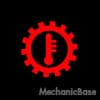
25. Transmission Temperature Warning
A transmission temperature warning light indicates the transmission temperature is too high, or there is an issue with the temperature measurement.
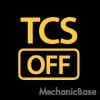
26. Traction Control Off
The traction control off symbol means that the traction control is manually switched off.
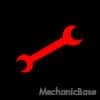
27. Powertrain Fault
A powertrain fault symbol indicates there is an issue with the powertrain or drivetrain system, like the 4WD or AWD system, for example.

28. Overdrive Off indicator
An overdrive off symbol means that the automatic transmission overdrive system is switched off. Read more
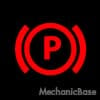
29. Parking Brake Light
A parking brake warning light indicates the parking brake is engaged, or there is an issue with the parking brake system
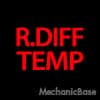
30. Differential Temperature Warning
A differential temperature warning light indicates the differential temperature is too high, or there is an issue with the measurement system.
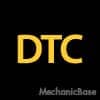
31. DTC Warning Light
A DTC warning light means that there is an issue with the BMW traction control system.

32. ESP BAS
An ESP BAS warning light indicates an issue with the electronic stability program or brake assist program.
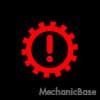
33. Automatic Gearbox Warning
An automatic gearbox warning indicates an issue with the automatic transmission or the system controlling it.
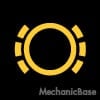
34. Brake Pad Warning
A Brake pad warning light means that the front or rear brake pads are worn and need to be replaced.
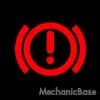
35. Brake Warning Light
A brake warning light indicates an issue with the brake system. This should be checked immediately because you may lose your brakes otherwise.
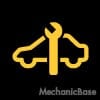
36. Service Vehicle Soon
A service vehicle soon symbol indicates there is an issue with the ABS, traction control, or electric suspension system.
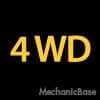
37. 4WD Engaged Indicator
A 4WD engaged symbol means that the four-wheel-drive system is engaged.
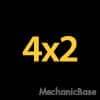
38. 2WD Engaged Indicator
A 2WD engaged symbol indicates the 4WD system is switched off and the car is sending power to two wheels only.
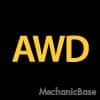
39. All Wheel Drive (AWD/4WD)
An All Wheel Drive symbol indicates that the AWD or 4WD system is engaged.
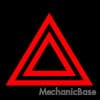
40. Hazard Lights On
A hazard lights symbol means that the hazard lights are turned on.
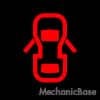
41. Door Ajar Symbol
A door ajar symbol indicates that one of the doors is open or there is an issue with the door switch system.
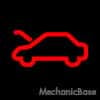
42. Hood Open
A hood open symbol indicates that the hood is not closed properly. It is very dangerous to drive with a hood that is not secured at higher speeds.

43. Lane Departure Warning
A lane departure warning light indicates the vehicle is moving out from the lane without signaling

44. Forward Collision Warning
A forward-collision warning light means that there is a potential collision detected.
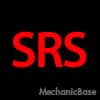
45. SRS Light
An SRS warning light indicates there is an issue with the airbag or supplemental restraint system. Read more
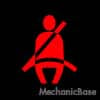
46. Seatbelt Indicator
A seatbelt symbol indicates one or more seat belts are not closed or there is an issue with the system. Check both the driver and passenger sides and the rear seats on some car models.
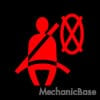
47. Side Airbag Warning Light
A side airbag warning light indicates the side airbags are turned off or there is an issue with the side airbags.

48. Power Steering Warning Light
A power steering warning light means that there is an issue with the power steering system
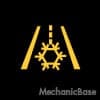
49. Icy Road Warning Light
An icy road warning light indicates the outside temperature is cold and that there is a risk of an icy road. Slow down!
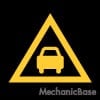
50. Distance Warning
A distance warning indicates the front radar detected that your vehicle is too close to the car in front or is being approached too quickly.

51. Bonnet Open
A bonnet open symbol means that the bonnet is not closed properly, or there is an issue with the bonnet lock switch.
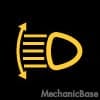
52. Headlight Range Control
A headlight range control warning light indicates there is an issue with the headlight range control system
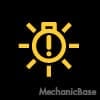
53. Exterior Light Fault
An exterior light warning light indicates an issue with one or more exterior lights, usually faulty light bulbs.

54. Highbeam Light Indicator
A high beam light symbol means that the high beam lights are turned on

55. Auto High Beam Lights
An auto high beam lights symbol means that the auto high beam system is turned on

56. Position Light Indicator
A position light symbol will turn on when the headlights are switched off and the position lights are on
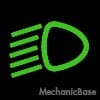
57. Low Beam Indicator Light
A low beam light symbol is turned on when the low beam headlights are turned on
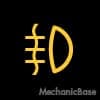
58. Front Fog Lights On
A front fog light symbol is illuminated when the front fog lights are turned on.
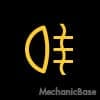
59. Rear Fog Light On
A rear fog light symbol is illuminated when the rear fog lights are turned on.
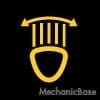
60. Turn Lights Warning Symbol
A turn light warning symbol indicates that there is an issue with the headlight’s turn-light system.
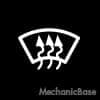
61. Windshield Defrost Indicator
A windshield defrost symbol indicates that the windshield defroster is turned on.
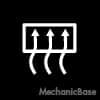
62. Rear Window Defrost
A rear window defrost symbol means that the rear window’s defroster is turned on.
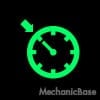

63. Cruise Control On Indicator
A green cruise control symbol indicates the cruise control is switched on and engaged.
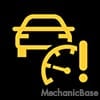
64. Cruise Control Warning
A cruise control warning symbol indicates there is an issue with the cruise control or throttle control system.
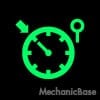
65. Cruise Control Speed Limiter
A cruise control speed limiter symbol means that the cruise control system will limit the max speed.

66. Cruise Control SET Indicator
A “SET” symbol indicates that the cruise control is set to a fixed speed and trying to hold the speed.
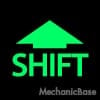
67. Shift Up Indicator
A shift up symbol indicates that it’s time to shift up to a higher gear.
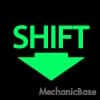
68. Shift Down Indicator
A shift down symbol means that it’s time to shift down to a lower gear.
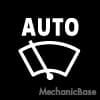
69. Auto Windshield Wiper
An auto windshield wiper symbol indicates that the auto wiper system is turned on.
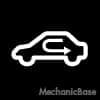
70. Recirculated Cabin Air
A recirculated cabin air symbol indicates that the car will recirculate the air inside the car instead of taking air from the outside of the car
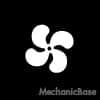
71. Heater Blower Fan On
A heater blower fan symbol means that the blower motor is turned on.

72. Heated Seats On
A heated seat symbol indicates that one or more seats’ heating system is turned on.
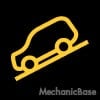
73. Hill Descent Control
A hill descent control symbol indicates that the hill descent system is turned on and will limit the car’s speed while going downhill.
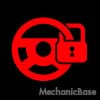
74. Steering Lock Warning Light
A steering lock warning light means that there is an issue with the steering lock or that the car key is not recognized
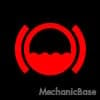
75. Brake Fluid Level Warning
A brake fluid level warning indicates that the brake fluid level is too low, or there is an issue with the measurement system.
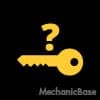
76. Key Not in Vehicle Indicator
A Key Not in Vehicle symbol indicates the car’s immobilizer system can’t reach or recognize your car key.
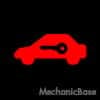
77. Immobilizer Indicator
An immobilizer symbol means that it can’t reach or recognize your car key, or there is an issue with the immobilizer system.
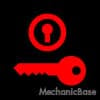
78. Ignition Switch Warning
An ignition switch warning symbol indicates that there is an issue with the ignition switch system.
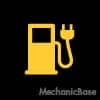
79. Low Electric Battery Charge
A low electric battery charge symbol indicates that it’s time to charge your electric vehicle’s battery.

80. Brake Lights Warning
A brake light warning light indicates that the brake lights are not working.
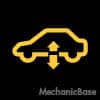
81. Air Suspension Warning
An air suspension warning symbol means that there is an issue with the air suspension system.
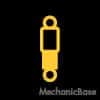
82. Suspension Warning Light
A suspension warning light shows up when there is a malfunction with the electric suspension system.
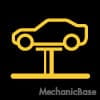
83. Car on Ramp Mode
A car on ramp mode warning symbol turns on when the car’s tires are raised up in the air or when the repair mode is activated.

84. ECO Mode On Indicator
An ECO Mode on symbol indicates that the Economy system is turned on. Read more
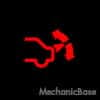
85. Rear Spoiler Warning
A rear spoiler warning light indicates that there is a malfunction in the rear spoiler electric system
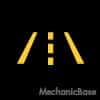
86. Lane Assist
A green lane assist symbol indicates that the lane assist system is turned on.
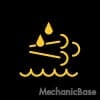
87. Exhaust Fluid (Diesel)
An exhaust fluid warning light means that the exhaust fluid (AdBlue) level is low in your diesel car.
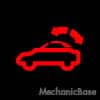
88. Convertible Roof Warning Light
A Convertible Roof Warning Light indicates that the convertible roof system is opening or closing.
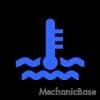
89. Blue Coolant Temp Light
A blue engine temperature symbol means that the engine is still cold and you should drive carefully.
- Toyota Dashboard Lights
- Lexus Warning Lights
Categories: General , Warning Lights
Related Posts
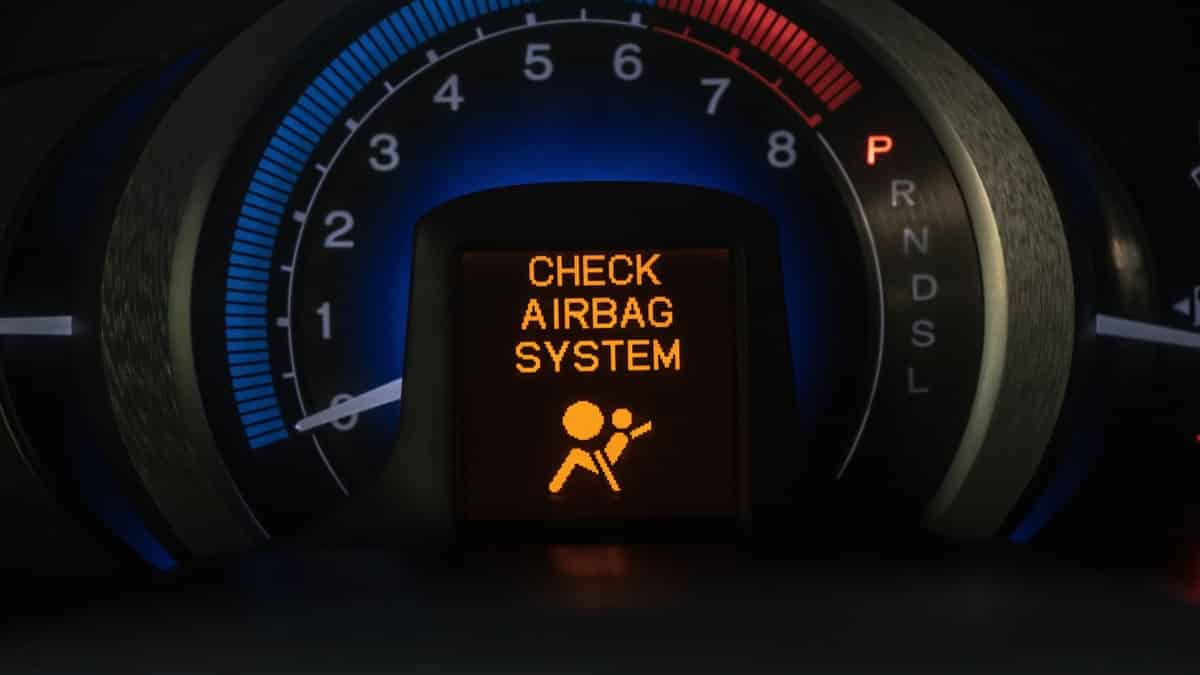
Latest Posts
- The Best & Worst Years Of Ford Explorer
- Best & Worst Years Of Toyota Corolla
- Best & Worst Years of Toyota RAV4
- When Should Your Child Switch To A Forward-Facing Car Seat?
- The Best & Worst Years Of Toyota Camry
- I Accidentally Put Premium Gas In My Car, What To Do?
Dashboard Warning Lights Guide
If you see a warning light on your dashboard (or touch screen, or the car’s smartphone app...) that means something went wrong. But some warning lights are more intuitive than others, especially those that have been around for a long time.
New cars are more complicated than most of us would have imagined just a decade or two ago, and they’re changing every year, with bigger screens, more efficient powertrains and more technological integration. As more cars incorporate electrification and semi-autonomous driving advancements, traditional instrument lights and warnings will increasingly go by the wayside as new ones take their place, but it’s still important to know what they all mean.
Any new car on a dealer lot today, even the most basic, likely has an advanced safety system that consists of cameras and sensors tied into the car’s main computer network, though the complexity varies based on the car’s level of safety tech and driver-assistance technology. Combine that with a central infotainment system controlling a lot of the car’s functions, and any minor problem can turn into a major one.
Advertisement
A warning light on the dashboard or instrument cluster (or infotainment display, or smartphone app) means something went wrong. Some are more intuitive than others, even though the methodology and design of warning lights has stayed fairly consistent over the years.
A red light indicates a major problem or failure, and you should prepare to stop as soon as it’s safe to do so. A yellow or amber light calls your attention to a condition you should be aware of, such as the traction control system activating on a wet or slippery surface. A green, blue or white light means you’re using a feature, like the headlights or a particular safety feature.
Let’s take a look at these lights, keeping in mind that they may vary somewhat. If you aren’t familiar with the lights in your car, this is a good primer, but always have your owner’s manual at the ready.
Check Engine Light

Trokantor | Getty Images
The check engine light, or CEL for short, is one of the most common dashboard warning lights but also one of the least specific. That’s because the check engine light warns of any engine-related issue. This can include something as simple as a loose gas cap (which may have a warning light of its own), or a more serious issue like a misfire, knocking or a loss of compression, which could result in premature engine wear or failure, which may leave you stranded and will be expensive to fix.
Protect Your Vehicle from Unexpected Repairs
The check engine light can be red or amber, and it typically features the outline of an engine, the words "service engine soon" or simply "check engine" in bold letters. Some owner’s manuals also refer to it as the malfunction indicator light, or MIL.
It is completely normal for the check engine light to illuminate momentarily when turning the key in the ignition, but it should disappear as soon as the vehicle is running. If not, the system is detecting an issue. Due to the potential for severe engine damage, we don’t recommend driving your vehicle if the check engine light is on. Call for a tow truck and have a repair shop diagnose and fix the issue.
Engine Coolant Temperature Light

liorpt | Getty Images
The engine temperature light features a red thermometer. When illuminated, it indicates that the engine is overheating. This is a serious problem and it can result in catastrophic engine damage, so if you see this warning light, you should always pull over as soon as it’s safe to do so and turn off your vehicle. There are a number of issues that can cause the engine to overheat, such as a broken water pump, a stuck thermostat, a leak in the radiator or in one of the coolant hoses or a blown head gasket.
Transmission Fluid Temperature Light

Romanovskyy | Getty Images
The transmission temperature light is often depicted as a yellow or red thermometer surrounded by a gear, or with the words "AT OIL TEMP." When illuminated, this light indicates that the transmission is overheating. As before, you should stop and turn off your vehicle when it’s safe to do so if you see this warning light. Common reasons for an overheating transmission include low fluid levels, worn internal components, high mileage or extended periods of heavy towing.
Engine Oil Pressure Light

VectorUp | Getty Images
The engine oil pressure light is typically depicted as a red oil can, and it signifies that oil is not circulating properly through the engine. This is a major issue because insufficient oil pressure can cause an engine to wear prematurely or even seize up, and it’s another light that means you should pull over and turn off the vehicle as soon as you can. Common reasons for low oil pressure include low oil levels, a worn oil pump and other worn internal components. It’s a good idea to check the engine oil level regularly and change the oil at the manufacturer-specified intervals.
Engine Oil Change Light

The oil change light does exactly what you’d expect: it indicates when the engine oil should be changed, based on mileage driven. Most modern vehicles require synthetic oil, which has allowed automakers to stretch oil change intervals from the traditional 3,000-mile limit to anywhere from 5,000 to 15,000 miles in some cases. You may see this indicator displayed as text instead of as a light, such as "Service Engine Soon" or "Oil Change Required." Some automakers refer to this feature as the oil life indicator as well.
Battery Warning Light

The battery indicator light is red and it features the outline of a battery with plus and minus symbols. When illuminated, this light indicates that the vehicle’s charging system isn’t functioning properly. The battery could be the issue, but the cause could also be a loose or corroded battery cable, a worn alternator, a broken accessory belt or another electrical fault in the system.
It’s completely normal to see this light turn on and then off when starting your vehicle. If the light turns on while you’re driving, though, you should pull over and stop as soon as it’s safe to do so. Otherwise, the engine will stall once the battery is completely drained, which may only take a few minutes.
EVs also have battery warning lights. A battery symbol with a lightning bolt means the battery’s charge level is low (this may also appear in plug-in hybrid vehicles) and a battery symbol with a temperature gauge means the battery is running hot, and the car should be pulled over and shut off as soon as it is safe to do so.
Tire Pressure Warning Light

The tire pressure warning light is depicted as a yellow tire with an exclamation point in the middle. This warning light signifies that one of the vehicle’s tires is underinflated, and – in some modern vehicles – it can show the pressure of all four tires and indicate which is low.
The tire pressure monitoring system (or TPMS) is responsible for activating this light. If it turns on while you’re driving, you should pull over and stop as soon as possible. Driving with a flat or underinflated tire is unsafe, as it can drastically alter the vehicle’s handling. Call for a tow truck if any tire is flat, or change the tire if your vehicle is equipped with a spare. If the tires are all still inflated, you should drive to the closest service station to check the pressures and add air if necessary.
Common reasons for this light to turn on include a puncture, a faulty tire pressure sensor or gradual loss of pressure due to seasonal temperature changes.
Reduced Engine Power Light

Douglas Sacha | Getty Images
Modern vehicles are equipped with a fail-safe system, or limp mode, that limits engine performance if a major fault is detected. This setup is designed to protect the engine, transmission and other driveline components from damage. The system triggers the engine light to turn on, and – in some vehicles – a "reduced engine power" readout may also illuminate.
While the vehicle may still be drivable, it’s best to pull over and stop due to the potential for damage. A faulty throttle position sensor is one of the most common reasons for this light to turn on.
Brake Warning Lights

The brake warning light features a red circle with an exclamation point or "P" in the middle, or simply the text "BRAKE." When illuminated, this light can indicate such things as routine notifications that your parking brake is engaged to warnings that there's a fault in your braking system, such as a failing master cylinder. If you unexpectedly have a brake warning light come on, first pull off the road, then set and release your parking brake. If the light does not turn off, it's time to call a tow truck before the system fully fails or more damage occurs.
It could be something as simple as a sticky parking brake, low brake fluid or worn brake pads. More serious issues, including problems with the master cylinder or the computers that handle your car's braking system, may be the culprit.
ABS Warning Light

jordan_rusev | Getty Images
The ABS light features a yellow or red circle with the letters "ABS" in the center, and it illuminates when a problem is detected with the anti-lock braking system or when the system is active. Generally, if it's flashing while you're braking, the system is functioning as intended. If it's on constantly, there's a problem with your anti-lock braking system.
ABS improves braking performance on slippery roads by pulsing the brakes to prevent the wheels from locking up and skidding. The brakes should still function if this light comes on while driving, but emergency braking performance may be reduced. If you notice any changes to your braking response or pressure when this light comes on, pull over and stop. Common causes for this light to turn on include a faulty wheel speed sensor or an issue with the ABS controller.
Traction Control Warning Light

baloon111 | Getty Images
The traction control system works hand in hand with the anti-lock braking system. It selectively applies the brakes to limit the wheels from slipping during acceleration, and it often engages when driving on icy and snowy roads, wet pavement, sand and gravel. The yellow traction control light – a car with two squiggly lines underneath – illuminates momentarily when the system is intervening. If the light stays on, however, that means there is a problem with the system and it may not operate properly. A faulty wheel speed sensor is one of the most common reasons for this light to turn on.
Stability Control Warning Light

westernstudios | Getty Images
Electronic stability control, or ESC, is another aspect of the anti-lock braking system. Stability control works to keep the vehicle heading in its intended direction. It does this by monitoring wheel speed and steering inputs, and then applying the brakes as necessary to prevent sliding or spinning. Some vehicles have a dedicated "ESC" or "VSC" warning light that illuminates when the system is engaging and stays lit if there is a fault, but many vehicles don’t. In those instances, the traction control warning light turns on instead.
Power Steering Warning Light

The power steering light features a red or yellow steering wheel icon, often with an exclamation point on the side. It illuminates when a problem is detected with the steering. If your vehicle is equipped with electric power steering (EPS), you’ll need to take it to a mechanic to get the issue diagnosed. If the car has hydraulic power steering, however, the light often means that the power steering fluid reservoir is low. Top it off and keep an eye out for leaks. Schedule a service appointment if this doesn’t fix the issue.
It is not safe to drive the vehicle if this light comes on, even if you don’t notice any problems right away, because a gradual or sudden lack of power steering assistance will make the car much harder to maneuver.
Airbag Warning Light

An illuminated airbag light indicates that there is a fault with the vehicle’s airbag system, which is often referred to as the supplemental restraint system (SRS). This indicator light typically features a red airbag icon, though in some vehicles it is replaced by "SRS" or "AIR BAG" text.
You should not drive your vehicle if this light turns on, because it means that the airbags may not deploy in the event of a crash and the seat-belt pretensioners may not tighten appropriately. Have a qualified repair shop diagnose and fix this problem.
Seatbelt Warning Light

Kim_white | Getty Images
The seat-belt light does exactly what you’d expect: it features the outline of a person wearing a seat belt, and it stays illuminated until the driver of the vehicle buckles up. Some vehicles also monitor the front passenger seat with weight sensors in the seat that communicate with the car’s computer. If all occupants have buckled up and the light doesn’t turn off, this may mean there is a problem with the belt buckle sensor or one of the pressure sensors under the seat.
Automatic Shift Lock Light

pialhovik | Getty Images
Modern automatic transmissions are equipped with a shift interlock, which prevents the vehicle from shifting out of park until the driver has pressed the brake pedal. In some vehicles, it can also prevent the engine from starting. This reduces the risk of the vehicle rolling away if the gear selector is pushed accidentally. The shift lock light features a green foot within a circle, and it turns on to show when the system is active.
Low Fuel Warning Light

vchal | Getty Images
The low fuel light features an amber or red gas pump, and it illuminates when the fuel tank is almost out of gasoline or diesel fuel, depending on the type of vehicle. The fuel level required to trigger this warning light can vary from vehicle to vehicle, but it often indicates about one to two gallons of fuel remaining. Additionally, this light may turn on if the gas cap is loose.
Washer Fluid Warning Light

The washer fluid light illuminates when a low level of windshield washer fluid is detected. This indicator light is typically yellow and it features a windshield icon. The same symbol is located on the cap of the washer fluid reservoir, so you can easily tell where to add the fluid. Most vehicles only have one washer fluid reservoir, even if there are rear windshield wipers with washers, and it’s usually found under the hood. In cars with rear washers, the washer fluid reservoir typically has a separate pump and hose that moves fluid to the rear glass.
Engine Stop-Start Light

Many modern vehicles are equipped with automatic stop-start systems that are designed to save fuel in stop-and-go city driving. These systems can shut the engine off when the vehicle is slowing to a stop and quickly turn the engine back on once the brake pedal is released. This reduces the amount of time the engine is idling when sitting in traffic.
The engine stop-start light is typically an "A" surrounded by a circular arrow, and it can indicate a few different things. It may illuminate in a green or blue color to show that the system is active, or in an amber color to show that the system has been disabled. An exclamation point next to this icon usually indicates a fault with the stop-start system.
Security Light
LeshkaSmok | Getty Images
The security light may turn on for a few reasons. It may illuminate and disable the ignition system if the incorrect key is inserted. The light may indicate a fault with the ignition if it illuminates while driving. The most common reason is to deter thieves. When the vehicle is parked and locked, it’s typical for the light to blink occasionally to indicate that the alarm system is armed. The design of this indicator light can vary, but it usually features the outline of a car with either a key or a padlock icon.
Glow Plug Light

Diesel engines are equipped with glow plugs, which are designed to heat up the combustion chamber and assist with starting the engine when it’s cold. It takes a few seconds for glow plugs to sufficiently warm up the engine air temperature, and they shut off once it is hot enough.
The amber glow plug light – a squiggle with two loops – illuminates to show that the glow plugs are warming up. The light turns off once the engine is ready to start. If the glow plug light blinks or remains on, it indicates that there may be a problem with this system and the vehicle may be difficult to start.

Hampi | Getty Images
In addition to glow plugs, diesel vehicles are also equipped with a diesel particulate filter (DPF), which collects engine soot and ash as it travels through the exhaust. This filter improves emissions and reduces the amount of smoke coming from the tailpipe; however, it can become clogged over time.
The DPF light illuminates when the filter is blocked and requires cleaning or replacement. This warning light is usually amber in color, and the design often features a box filled with small circles or a puff of smoke passing through a line of circles.

U.S. News & World Report | John M. Vincent
The diesel exhaust fluid light, or DEF light, is the third warning light that diesel vehicle owners should be aware of. This light looks very similar to the DPF light with the addition of two droplets to symbolize the fluid. The light turns on when a low level of diesel exhaust fluid is detected, often followed by text warnings to refill the DEF reservoir. This fluid is a mixture of urea and deionized water that is injected into the exhaust system to reduce nitrogen oxide emissions. Another common name for DEF is AdBlue.
You should refill the DEF tank as soon as possible when this light turns on. Otherwise, the engine could enter a reduced-power mode or stop altogether if the tank is fully empty.
Cruise Control Light
Parkheta | Getty Images
The cruise control light typically features a speedometer icon, and it can indicate a few different things depending on the color. Green often means that the cruise control has been set. An amber or yellow light can indicate that cruise control is enabled but not set, or that there is a problem with the system. Refer to your owner’s manual for specific information about the cruise control system in your vehicle.
Adaptive Cruise Control Light
da vooda | Getty Images
Adaptive cruise control uses forward-facing cameras and sensors to maintain a set cruising speed and distance to the car ahead. When engaged, adaptive cruise control can slow the vehicle if the car ahead begins to slow. Conversely, it can return the vehicle to the desired cruising speed if the car ahead accelerates or merges into another lane.
There are a few common dashboard lights related to the adaptive cruise control system. You may see text that reads "ACC," a speedometer icon with a car behind it, or a car with waves in front of it. These lights typically indicate that the system is enabled. A series of bars between two vehicle icons usually indicates the desired following distance to other cars. Refer to your owner’s manual for additional information about this system.
Forward Collision Warning Indicator
VICTOR | Getty Images
If your car is equipped with forward collision warning, this light will let you know that the car needs your attention. When your car's forward-collision warning system senses that you're closing on the vehicle ahead of you too fast, you'll see a dramatic flashing red or amber light screaming "Brake." You'll need to immediately brake to avoid a collision or reduce the severity of an inevitable crash. An audible warning usually accompanies the flashing light.
Lane-Departure Warning Light

As its name suggests, the lane-departure warning system alerts the driver if the vehicle is drifting out of its lane. Common alert methods include "LDW" or "LDA" warning lights, a symbol of a car veering out of a lane, audible beeping and – if bundled with lane keep assist – a tug at the steering wheel to correct the vehicle’s path.
Parking Assist Light
Marin Tomas | Getty Images
If your vehicle is equipped with parking sensors, you might see a warning light with a "P" and a triangle separated by waves. This symbol may also be accompanied by audible beeping or a bird’s eye view of the vehicle. It indicates that either the front or rear bumpers are in close proximity to an object, but it may also indicate a potential issue with this system. Refer to your owner’s manual for additional info.
Blind-Spot Monitoring Light
Blind-spot monitoring systems use sensors at the sides and rear of the vehicle to detect other cars that may be obstructed by the driver’s field of view. These systems typically alert the driver by illuminating an icon – two staggered cars separated by waves – in the side mirror on the side of the approaching vehicle. You may also see "BSM" or "BLIS" lights on the dashboard. These lights can indicate that the system is operating, but they can also indicate a potential issue. Again, refer to your owner’s manual for more detailed information.
Drowsiness Monitoring Light

Mercedes-Benz USA
Driver-attention monitoring systems use a number of sensors to detect if the driver is paying attention to the road. Most systems look for telltale signs like constant steering wheel corrections and extended driving distances without a break, but some advanced systems can also monitor eye movements. These systems typically alert the driver by flashing a coffee cup symbol on the dashboard, as well an "attention assist" or "time for a break" message.
Master Warning Light

Master caution warning lights, common to high-performance aircraft, are finding their way into today's cars and trucks . The master warning light (or instrument panel message) tells you to check other systems for issues. For example, it may illuminate to tell you to check your tire pressure monitoring system or the vehicle's maintenance status. In some cars, it will remain illuminated until the underlying issue is corrected.
Fog Lamp Indicator

The fog lamp indicator lets you know if your fog lamps are on or off. If it's illuminated, they're on; if not, they're off. In most states, driving with your fog lights on is unlawful while traffic is approaching from the other direction.
Gearbox Warning

A gearbox warning is similar to a transmission fluid temperature warning light and sometimes shares the same spot on the dashboard. It indicates a fault in the transmission or components. Its illumination can be caused by something as simple as low transmission fluid or a mechanical problem that's much more serious. Ignoring a gearbox or transmission warning light can lead to potentially expensive repairs or a failure while in traffic.
Gas Cap Indicator

Most cars don't have a gas cap indicator light, but the first step in investigating a check engine light is ensuring the gas cap is present and properly tightened. A leading cause of check engine lights is a loose or missing fuel cap.
Some, but certainly not all, cars will alert you if your fuel door is open. Most electric vehicles will tell you if the charging port door is open.
High-beam Headlight Indicator

A basic high-beam headlight indicator will light up blue when the high-beam headlights are on and turn off when you switch back to your low-beam headlights.
Automatic High-Beam Headlight Indicator

In newer cars with automatic high-beam headlights, there will typically be an "A" next to the high-beam headlight indicator to show that the automatic high-beams are active. In many vehicles, the icon will change from white to blue when the automatic system switches from low to high beams.
Door/Trunk/Hood Open Warning

Most vehicles on the road today have dashboard warnings that let you know if you have a door, trunk, hatch or hood ajar. Some let you know which one it is, while others let you sleuth it out yourself. It's a good idea to check any opening that triggers a warning, even if you think it's closed, because it may not be fully latched.
In some cars, the warning is a simple icon. In others, it's a high-definition image of the vehicle with the relevant area illuminated.
Electric Vehicle Dashboard Warnings

Electric vehicles have several dashboard warnings and displays that cars with internal combustion engines don't have. Some include charging status, range and time to charge. Since electric cars are nearly silent, a dash message or indicator will tell you when the vehicle is ready to move.
One of the most critical electric car indicator lights, as mentioned earlier, is a battery pack overheat warning. It's a signal to park the vehicle outside, as the battery cooling system may have failed. Another EV-specific light worth noting is a symbol of a car with an exclamation point. This indicates a fault somewhere in the car’s electrical system, and you should get the vehicle serviced immediately if it comes on.
ECO Driving Indicators

Two types of dashboard indicators indicate how economically you're driving. The first just notes when you've set your vehicle dynamics system to its Eco mode, limiting the car's performance to increase fuel efficiency. The second is an active indicator that monitors how you're driving and lets you know when you're driving in an economical manner. These systems may vary, particularly in cars that have more sophisticated Eco modes, and aren’t necessarily limited to EVs or hybrids .
Four-Wheel-Drive/All-Wheel-Drive Indicators

If your vehicle is equipped with four- or all-wheel drive, you'll have a few additional indicators on your dash. In vehicles with four-wheel drive, there will be an indicator that shows whether you're in two-wheel drive, four-wheel drive high range or (if equipped with a two-speed transfer case) four-wheel drive low range. There may be additional indicators for locking differentials, hill descent control and other systems specifically for four-wheel drive or off-road driving modes.
Vehicles with all-wheel drive will have an indicator that warns you if there's a fault with your drivetrain.
Save on your monthly payments! Find the best local prices on your next car.
U.S. News Best Cars Awards
- Best Cars for the Money
- Best Cars for Families
- Best Vehicle Brands
Recommended Articles

The Safest SUVs
Cherise Threewitt Dec. 19, 2023

Cars With the Best Safety Features
Cherise Threewitt Feb. 17, 2023

Car Warranty Guide: What You Need to Know
John M. Vincent Feb. 16, 2023

Safest Luxury SUVs
Warren Clarke Aug. 2, 2023

Nitrogen in Tires: Pros and Cons
George Kennedy June 14, 2023

Best Cars for Recent Grads
Warren Clarke June 1, 2023

What is Cruise Control and How Does it Function in a Car?

A Quick Overview
Driving on long stretches of highway can be tiring, especially when trying to maintain a constant speed. Cruise control alleviates this by allowing drivers to set and maintain a desired speed without continuous use of the accelerator pedal. Understanding how cruise control functions can help drivers make the most of this convenient feature.
What is Cruise Control?
Cruise control is an automotive feature that enables drivers to set a desired speed for their vehicle. Once activated, the cruise control system maintains the set speed without the need for constant pedal input. It helps drivers maintain a steady pace on long trips, providing convenience and reducing the likelihood of unintentional speed fluctuations.
How Does Cruise Control Function?
Cruise control systems may vary slightly among different vehicle models, but they generally function using the following components and controls:
1. Set Button
To activate cruise control, the driver typically presses a “Set” button or engages a switch on the steering wheel or dashboard. This action captures the current speed of the vehicle and sets it as the target speed for the cruise control system to maintain.
2. Speed Control
Once the cruise control system is activated, the driver can adjust the speed using speed control buttons. These buttons allow the driver to increase or decrease the set speed in small increments. By pressing the appropriate button, the driver can fine-tune the desired speed for their comfort and road conditions.
3. Resume Button
The “Resume” button, also known as the “Accel” button, allows the driver to restore the previously set speed after it has been canceled or temporarily interrupted. When the driver presses the “Resume” button, the cruise control system accelerates the vehicle to the previously set speed.
4. Cancel Button
The “Cancel” button, often marked with the symbol “CRUISE” or “OFF,” deactivates the cruise control system. Pressing this button disengages the system and allows the driver to regain full control over acceleration and braking. It is important to note that the brake pedal can also automatically deactivate cruise control when pressed.
Advantages of Cruise Control
Cruise control offers several advantages to drivers:
- Reduced Driver Fatigue: Cruise control allows drivers to maintain a steady speed without continuously pressing the accelerator pedal, reducing fatigue on long drives.
- Improved Fuel Efficiency: By maintaining a consistent speed, cruise control can help optimize fuel efficiency by reducing unnecessary acceleration and deceleration.
- Avoiding Speeding: Cruise control helps drivers adhere to speed limits by maintaining a set speed, preventing unintentional speeding due to variations in foot pressure on the accelerator pedal.
Limitations of Cruise Control
While cruise control provides convenience, there are limitations to consider:
- Traffic and Safety: Cruise control should be used only in appropriate situations. It is important to remain vigilant and be ready to take control of the vehicle when necessary, such as in heavy traffic or hazardous road conditions.
- Hilly Terrain: Cruise control may struggle to maintain a constant speed on hilly terrain, as it cannot anticipate changes in elevation. In such situations, the driver may need to manually intervene and adjust the speed accordingly.
👉 You may also like - A Deep Dive into the Adaptive Cruise Control System. What Is It?
What is cruise control?
Cruise control is a technology in cars that allows drivers to maintain a constant speed without keeping their foot on the accelerator. The feature is commonly used during long drives on highways or other open roads.
How does cruise control work?
When cruise control is activated, the driver sets a desired speed for the car to maintain. The car’s engine and transmission work together to maintain that speed without any input from the driver.
Is it safe to use cruise control while driving?
Yes, cruise control is generally safe to use while driving. However, drivers should remain attentive and ready to take control of the car at any moment. It’s also important to note that cruise control should not be used in hazardous weather or road conditions.
What are the benefits of using cruise control?
Using cruise control can improve fuel efficiency by helping drivers maintain a consistent speed and reduce unnecessary acceleration. It can also reduce driver fatigue during long drives by allowing them to rest their feet.
Can all cars have cruise control installed?
Not all cars come with cruise control as a standard feature, but many newer cars do have this option available. Additionally, aftermarket cruise control systems can be installed on most cars.
Can cruise control be dangerous?
Cruise control can become dangerous if the driver becomes too reliant on it and fails to remain attentive. Additionally, using cruise control in hazardous conditions, such as heavy traffic or inclement weather, can be dangerous.
Does cruise control work on manual transmission cars?
Cruise control can be installed on manual transmission cars, but it requires a more advanced system than the one used for automatic transmissions. Manual transmission cruise control systems are typically more expensive and less common.
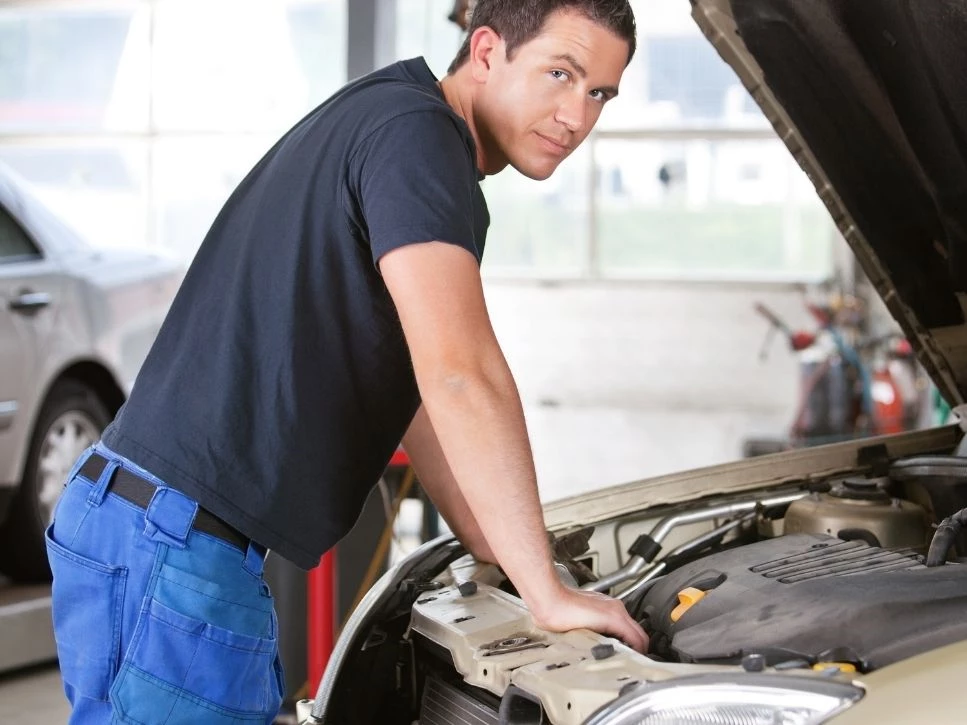
Is Bypassing the Crank Position Sensor Possible? Here's How
A guide to wiring 1, 2, 3, 4 wire oxygen sensors. detailed diagrams.
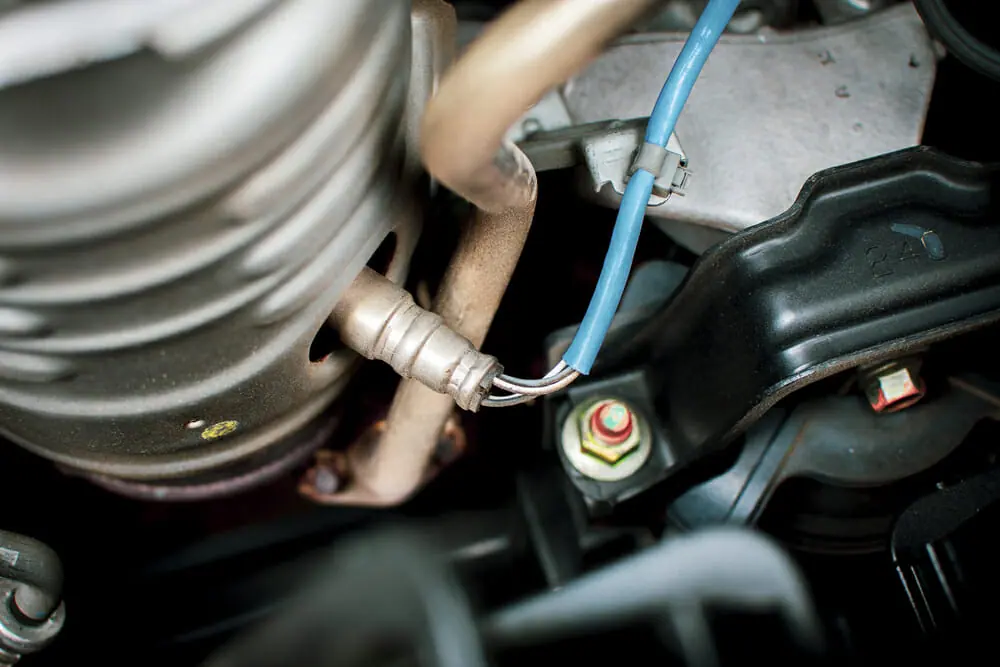
Mastering ASE Testing - The Ultimate Guide for Success

Keeping Current - Charging System Diagnosis and Repair
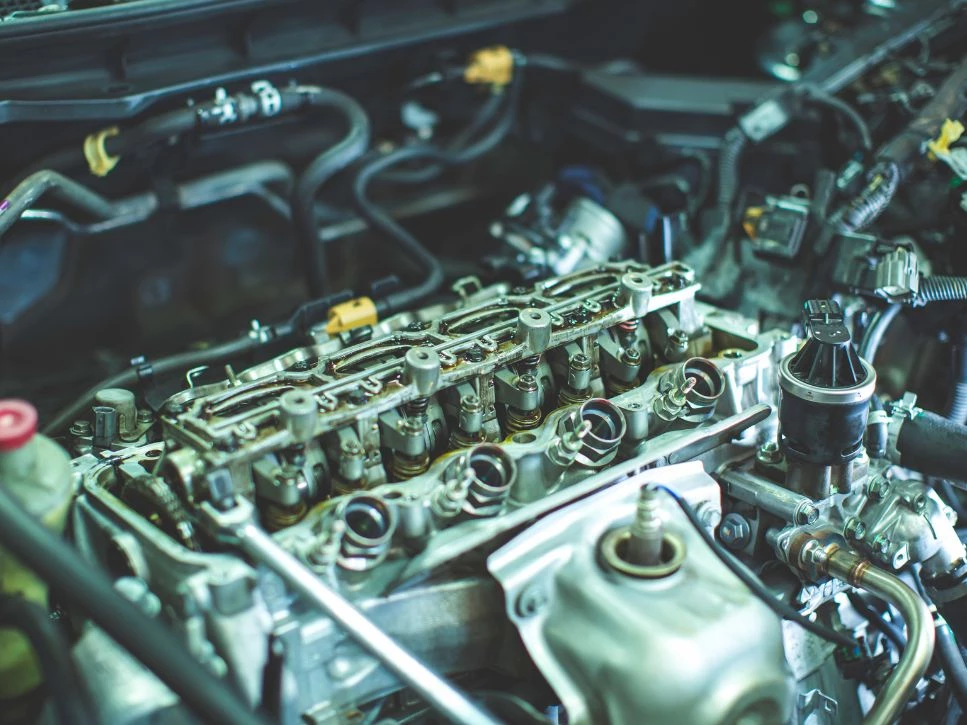
The complete ASE practice test with answers and explanations
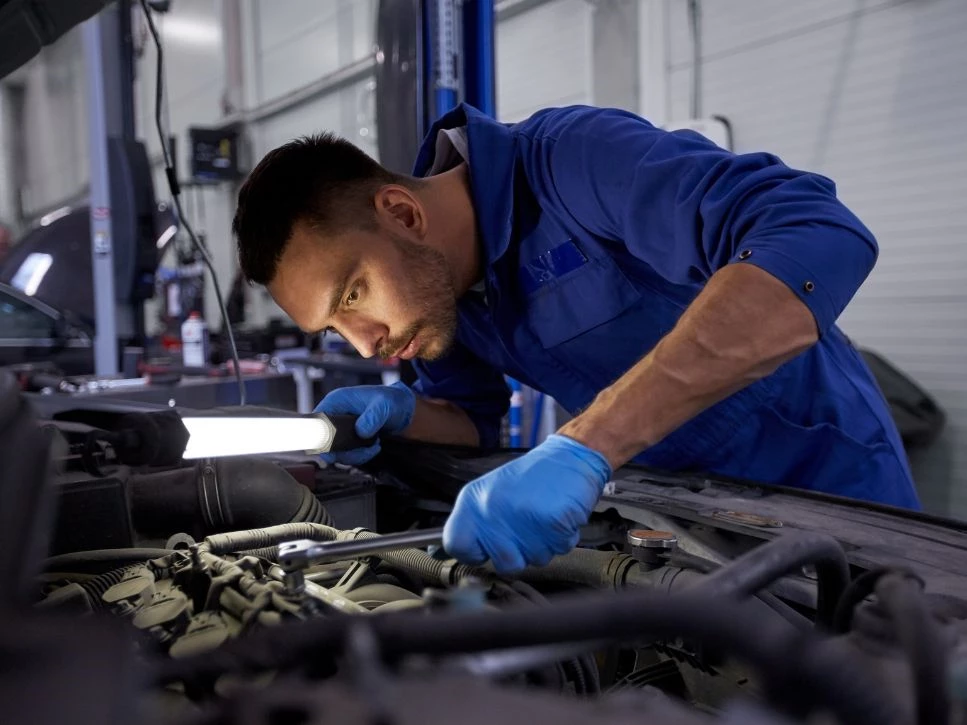
Enhancing the Ride - Accessories Diagnosis and Repair

Car With Arrow Symbol Meaning: Cruise Control Function!
The car with an arrow symbol on a car’s dashboard typically indicates that the car’s cruise control function is active.
When this light is illuminated, it means the vehicle’s speed is being maintained automatically without the need to press the accelerator.
Cruise control is an advanced system used in modern vehicles to automatically regulate the speed of a car. It allows the driver to set a desired speed that the car will maintain without the driver having to keep their foot on the accelerator pedal.
This feature is particularly useful during long drives on highways where speed limits are consistent.
When the cruise control system is engaged, a symbol often appearing as a car with an arrow pointing forward will light up on the instrument cluster.
Here’s how it typically works:
Please note that the exact appearance of the symbol and operation can vary depending on the vehicle’s make and model.
Ensure a smooth and consistent driving experience by utilizing your vehicle’s cruise control function, symbolized by the dashboard’s car with an arrow icon.
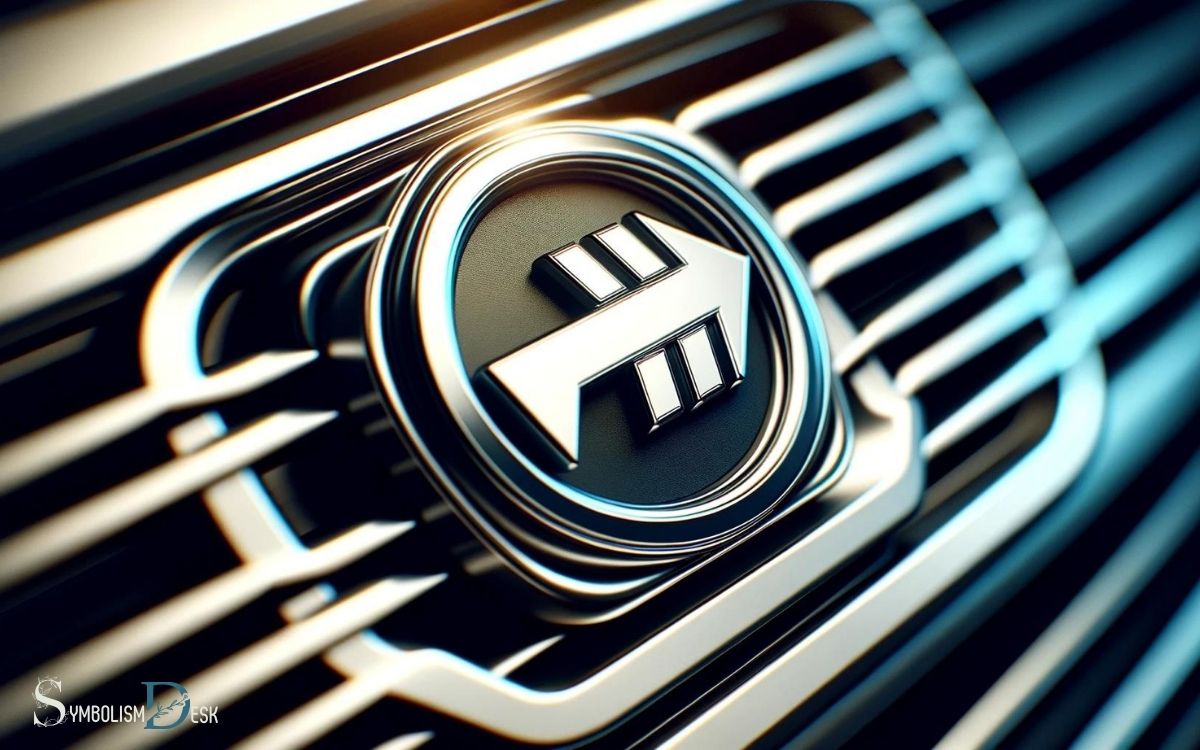
Table of Contents
Key Takeaway
Origin of the car with arrow symbol.
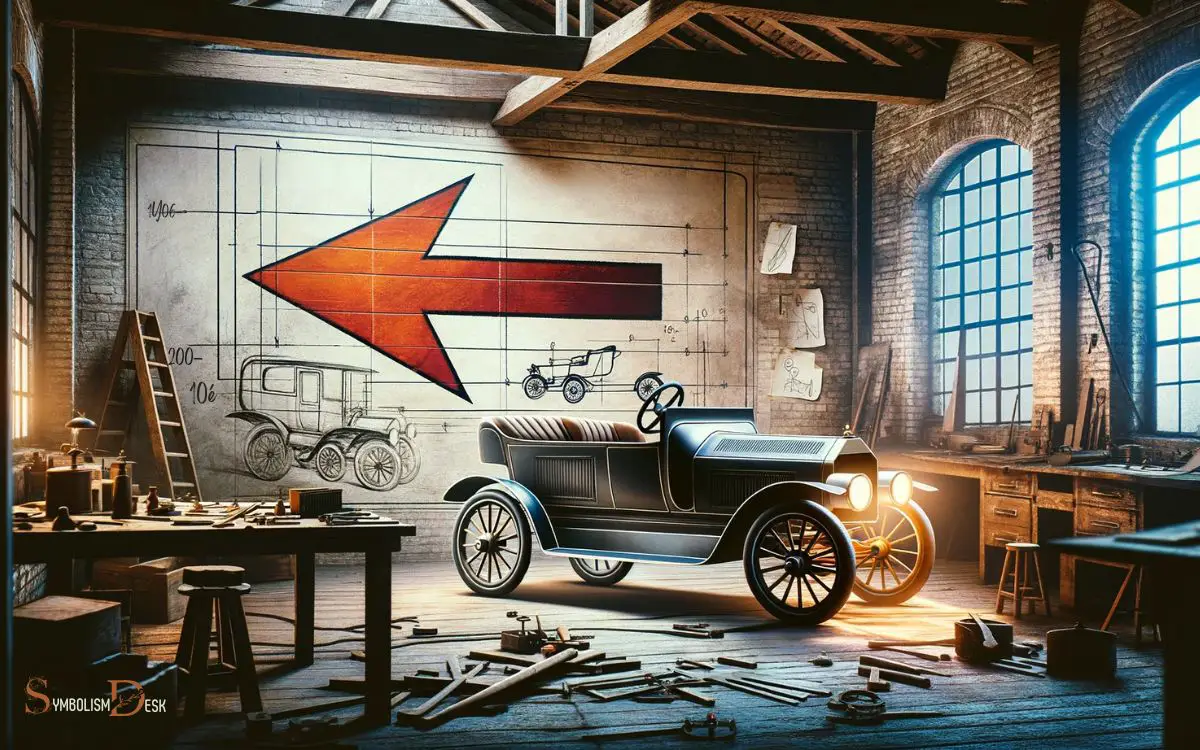
The origin of the car with arrow symbol can be traced back to the early 20th century when automobile manufacturers began incorporating it into their branding.
The arrow symbol is often associated with speed, progress, and forward motion, making it a fitting choice for car companies looking to convey these qualities.
It is believed that the symbol was initially used to represent the idea of swift movement and the advancement of technology in the automotive industry.
As car designs evolved and speeds increased, the arrow symbol became synonymous with the dynamic nature of the automobile.
Over time, it has become a widely recognized emblem in the automotive world, symbolizing not only the speed and agility of cars but also the innovation and advancement of the industry as a whole.
Interpretations of the Symbol
One popular interpretation of the symbol’s meaning is its association with speed and technological advancement in the automotive industry.
This interpretation evokes a sense of progress and innovation, suggesting that vehicles equipped with this symbol are designed for high performance and cutting-edge technology.
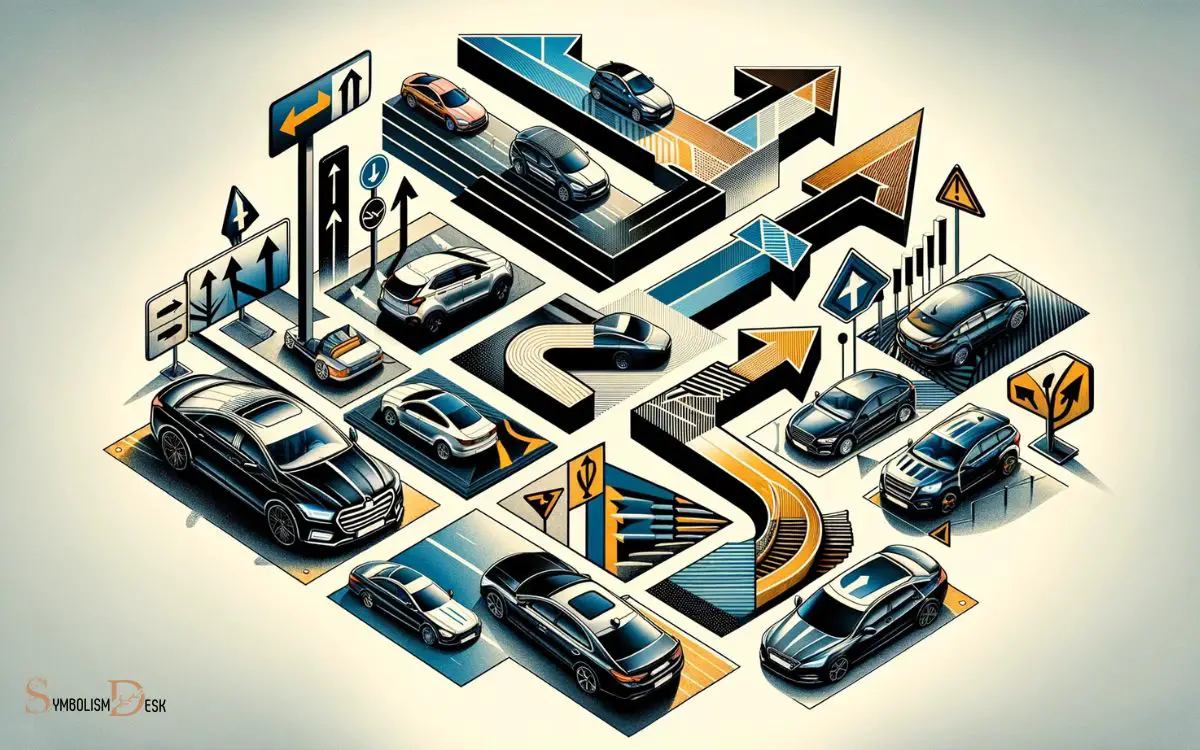
Other emotional responses to this symbol’s interpretation may include:
- Excitement: The arrow symbol conveys a sense of thrill and exhilaration, evoking the excitement of driving a powerful and advanced vehicle.
- Confidence: The symbol may instill a feeling of confidence in the vehicle’s capabilities, assuring the driver of its speed and agility.
- Modernity: It signifies modernity and futuristic design, appealing to individuals who value the latest advancements in automotive technology.
- Precision: The arrow symbol may evoke a sense of precision and accuracy, suggesting that the vehicle is engineered for optimal performance.
This interpretation sets the stage for understanding the common placement of this symbol in vehicles.
Common Placement in Vehicles
In an automotive context, arrow symbols are commonly placed on the dashboard or instrument panel to indicate the direction of the vehicle’s turn signals. This helps drivers and passengers easily identify which direction the vehicle intends to turn.
Additionally, these symbols may also be found on the exterior of the vehicle near the headlights or taillights for pedestrian and other driver visibility.
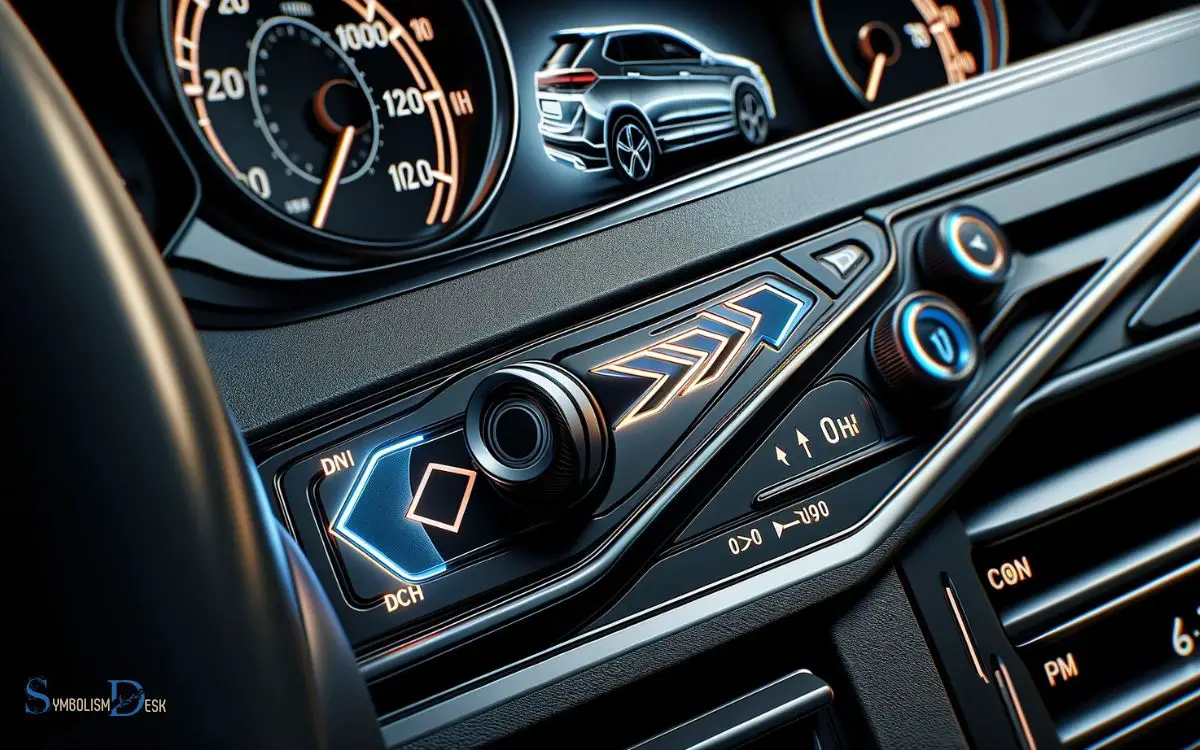
Below is a table showing the common placement of arrow symbols in vehicles:
Understanding the placement of these arrow symbols can help individuals operate and interpret the signaling systems of various vehicles effectively.
Action Steps for Drivers
Drivers should familiarize themselves with the arrow symbol’s meaning and operation to ensure safe and effective signaling while operating a vehicle.
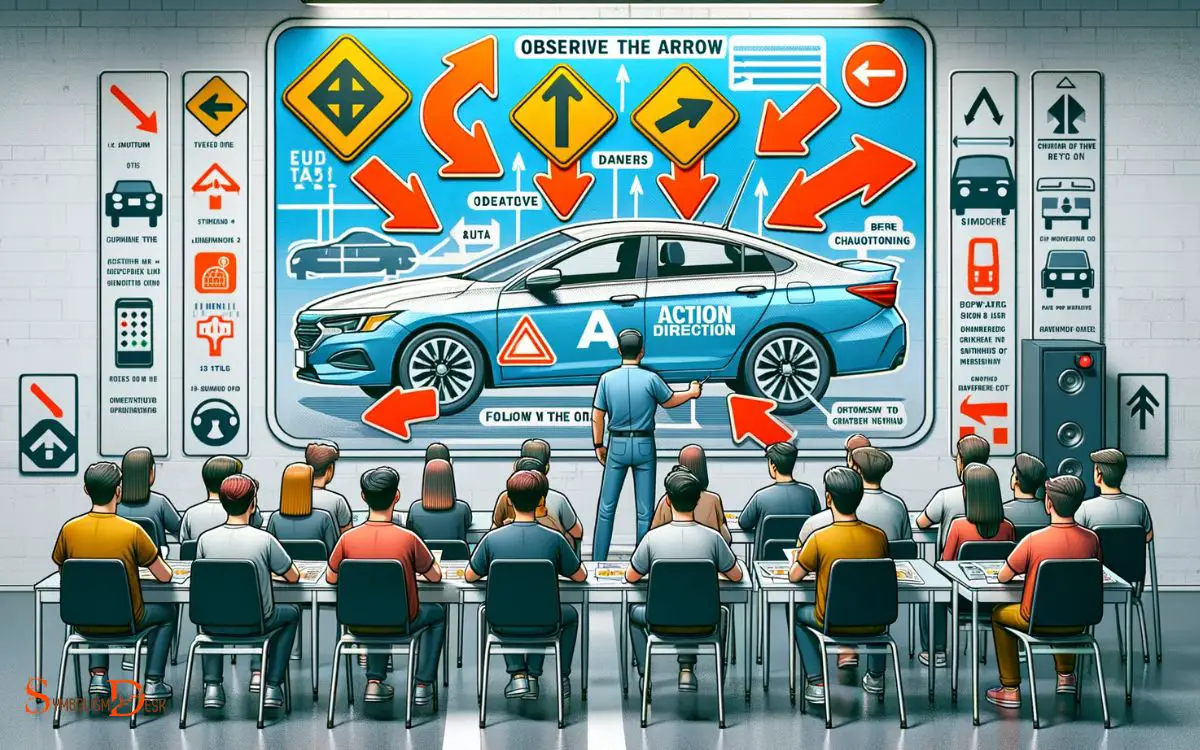
To achieve this, they can take the following action steps:
- Study the Vehicle Manual : Take time to read and understand the section on turn signals and arrow symbols in the vehicle’s manual. This can provide valuable insights into the specific meaning and operation of the arrow symbol in the vehicle.
- Practice in a Safe Environment : Find a safe and empty parking lot to practice using the turn signals and arrow symbols. This can help drivers become more comfortable and confident in using them while driving.
- Seek Professional Advice : Consider seeking advice from a driving instructor or experienced driver to receive personalized guidance on using the arrow symbol effectively.
- Stay Attentive on the Road : Always stay focused and attentive while driving, and make a conscious effort to use the arrow symbol accurately and at the right time.
Safety and Regulatory Implications
When understanding the arrow symbol’s meaning and operation, drivers should be aware of the safety and regulatory implications, which play a crucial role in ensuring compliance with traffic laws and maintaining road safety.
The arrow symbol on a car indicates the intention to change lanes or make a turn, and understanding its implications is essential for safe driving.
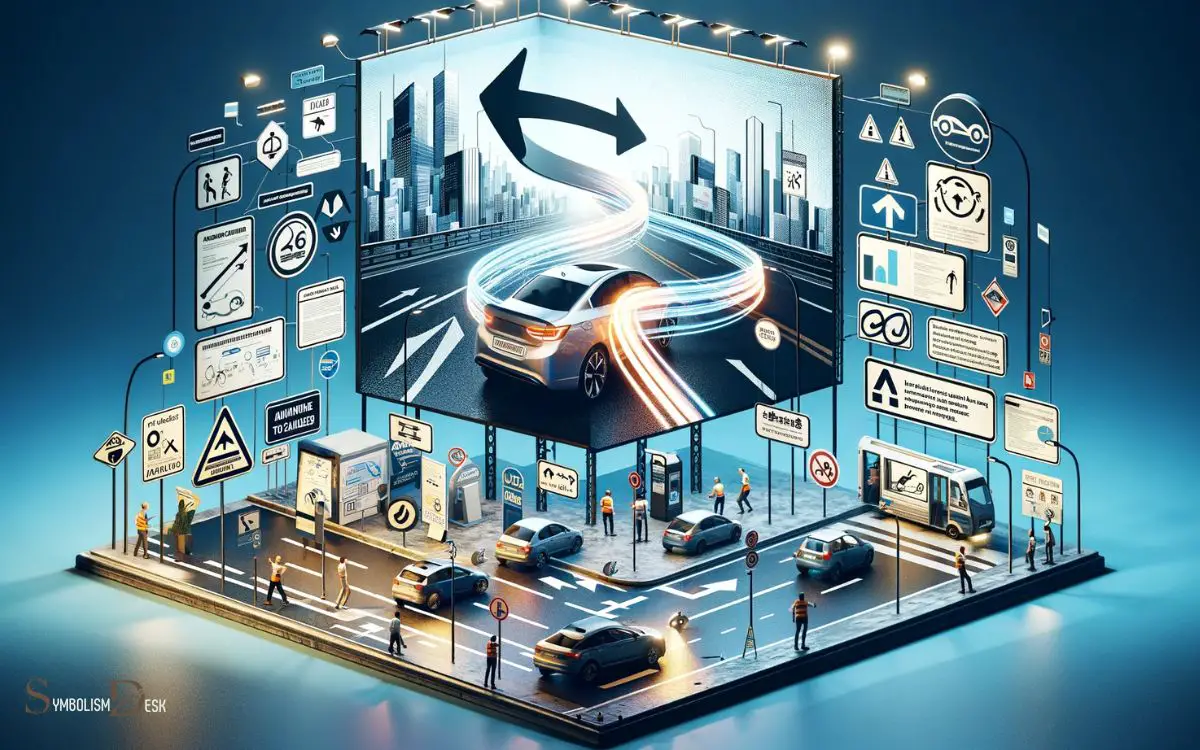
Here is a table summarizing the safety and regulatory implications of the arrow symbol:
As drivers, it’s important to pay attention to the car with arrow symbol, as it indicates the direction of the fuel door.
Just like following the arrow on a treasure map leads to the hidden treasure, following the arrow on your car leads to the hidden fuel door.
It’s a small detail that can make a big difference in your driving experience. So, next time you see that arrow, remember it’s pointing you in the right direction.
Similar Posts
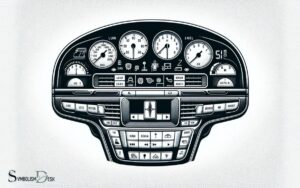
Lincoln Town Car Dashboard Symbols: Safety Systems!
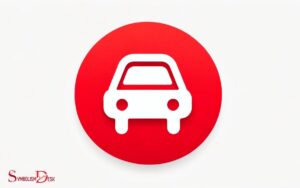
Red Car Symbol on Google Maps: Guiding!
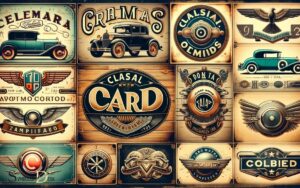
Old Car Symbols and Names: Explanations!
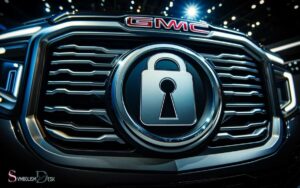
Gmc Car With Lock Symbol: Security System!

Evergrande Electric Car Stock Symbol: Explain!
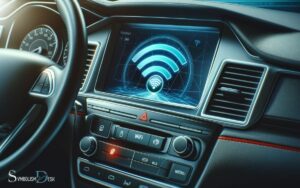
Ethnicities and religions [ edit ]
Sochi is one of the most multinational cities in Russia with people of more than 100 ethnic groups living there. Most of them are ethnic Russians (68%), the important minorities are Armenians, Ukrainians, Georgians, Greeks, Circassians, Belorussians, Tatars, and Jews.
Russian is the predominant language spoken by almost everyone in the city, including nearly all minorities, but many local placenames came from Abkhazian and Circassian languages. The most commonly used ones include "pse" / "psh" / "psta" (water), "akh" (high), and "nykh" (holy).
The major part of Sochi inhabitants are Orthodox Christians (80%). There are also Muslims (5%), Catholics and Jews. Orthodox cathedrals are represented in all the parts of the city. The only Catholic cathedral in Central Sochi was built in 1997 (most churchgoers are Catholic Armenians). There is also a mosque, albeit a very small and remote one (in Tkhagapsh community, 15 km towards the mountains from Lazarevskoe). The city authorities are planning to build a new mosque and a synagogue by 2014.

Orientation [ edit ]
Greater Sochi occupies 105 km along the Black Sea coastline. Its total area is 3,500 km² (3 times as large as Moscow ). However, most of the population is spread along the narrow coastline stripe, while the mountain area (1,900 square km) mostly belongs to Sochi National Park and partly to Caucasian Biosphere Reserve . The city alignment is from north-west to south-east, from the neighboring city of Tuapse right to the Russian border with Abkhazia .
Greater Sochi has 4 administrative districts. Central Sochi District is the core of the city and its most developed and populated part. Many of the city attractions, hotels and most shopping centers are there. During the summer season, Central Sochi is usually overcrowded and traffic-jammed. Lazarevskoye District is the largest (1744 km 2 ) and the longest (65 km coastline) one among Sochi districts, includes 34 sub-districts, most of them are spread along the sea shore. Lazarevskoe district is less urbanized that other ones in Greater Sochi. In fact it has many various settlements, often poorly connected with each other and lacking basic infrastructure. Khosta District is to the south-east from Central Sochi, this district contains some major attractions, such as Akhun mountain . While Adler District is the city's important transport hub, which includes Sochi International Airport, Adler train terminal (final point for most trains going to Greater Sochi) and the only open border crossing with Abkhazia . The role of Adler is rapidly increasing now because it will host all the Olympic venues for the 2014 Games (the Olympic coastal cluster at Imeretinskaya lowland and the mountain cluster at Krasnaya Polyana ). By 2014 the look of Imeretinskaya lowland and Krasnaya Polyana has drastically changed, as well as the local transport infrastructure.
The best developed, urbanized and monolithic part of Greater Sochi is the coastline between Dagomys (south-east of Lazarevskoe district) and Imeretinskaya lowland of Adler district.
Money [ edit ]
Like elsewhere in Russia, the Russian rouble (RUB) is the only currency officially accepted in the city. Money exchange is not a problem, but use only official counters at banks and avoid people offering you exchange at major transport hubs. By Russian legislation passport is needed for exchange operations.
Sochi has many ATMs, especially in Central Sochi and Adler. You may withdraw not only roubles, but also dollars or euro at some of them (approximately 10% of all ATMs). Take into account, that Visa and MasterCard are widespread in Russia, but American Express cards are usually not accepted even at major tourist places. Also, expect possible problems with paying by card at minor shops or restaurants and at small private hotels. Have some cash with you for such cases.
Get in [ edit ]
Sochi is among several Russian seaports, where international tourists have the opportunity of visa-free entry for up to 72 hours (applicable for cruise ships and ferry line passengers only). Check limitations and requirements carefully before use.
For other foreign visitors standard Russian visa requirements apply.

By plane [ edit ]
International flights [ edit ].
There are regular air connections with Vienna ( Austrian Airlines [dead link] ), Istanbul ( Turkish Airlines ), and Tel-Aviv ( Rossiya Airlines ). Also Belgrade (air serbia, 2022)
Former Soviet Union countries are also connected to Sochi:
Yerevan , Armenia ( Ural Airlines ), Minsk , Belarus ( Belavia ), Chișinău , Moldova ( Air Moldova ), Tashkent , Uzbekistan ( Rossiya ), and Dushanbe , Tajikistan ( Tajik Air ).
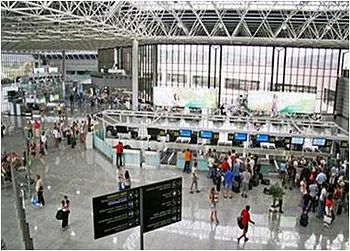
Domestic flights [ edit ]
Several flights per day connect Sochi with Moscow and Saint Petersburg . Other major cities of Russia, such as Kazan , Krasnodar , Krasnoyarsk , Perm , Rostov-on-the-Don , Samara , Yekaterinburg and others are also connected by air with Sochi.
Key carriers:
- Aeroflot [dead link] - flights to Sochi from Sheremetyevo airport, Moscow
- Nordavia [dead link] - flights from Arkhangelsk
- S7 - flights to Sochi from Domodedovo airport, Moscow
- Sky Express - domestic discounter, flights to Sochi from Vnukovo airport, Moscow
- Utair - flights from Tyumen , Ufa and Surgut
- Yakutia [dead link] - flights from Yakutsk
Airport transfer [ edit ]
By bus/marshrutka:
- 51 - from the airport to Adler (central market)
- 105 , 124 - from the airport to Sochi central railroad station
- 135 - from the airport to Krasnaya Polyana
Taxi service at the airport is chaotic, taxi drivers can rarely speak English, and the declared price for a ride can be inadequate. To protect yourself, book taxi or hotel transfer in advance. The price varies greatly depending on the district you are going to.
- Sky Express Taxi ( airport transfers only ), ☏ +7 8622 358-100 . SkyExpress discounter airline offers the airport taxi transfer as an addition to other flight services (don't expect discount prices for that).
- Taxi Galant ( airport transfers only ), ☏ +7 918 101 0342 . Transfers from Sochi International airport to any part of Greater Sochi and back. Order in advance, at least 2 hours, or better one day prior to ride.
Russian Railway company has completed a two-way railway to Sochi airport and it is the easiest way to get to Sochi Adler from the airport. Tickets are fairly cheap and the train goes approximately every hour.

By train [ edit ]
Sochi has two major rail terminals in Central Sochi and Adler. However, most trains make short stops at small transit stations of Great Sochi: Lazarevskaya, Loo, Dagomys, Matsesta and Khosta. Tickets can be purchased via Russian Railways website , at RZD counters, or via travel agencies. RZD opens ticket sales 45 days prior to ride, book in advance during the high season.
There are regular train connections with key cities of Russia, and also with major cities of Belarus and Ukraine . Round-the-year destinations include:
International:
- Kyiv , Ukraine (30 hours)
- Minsk and Gomel , Belarus (34-39 hours)
- Kaliningrad (64 hours, via Vilnius , Lithuania )
- Sukhum , Abkhazia (from Adler station, 5 hours)
- Moscow (25-28 hours, speed trains and 15 hours route are planned to be launched by 2014 Olympics)
- Saint Petersburg (40-49 hours)
- Chelyabinsk (64 hours)
- Kazan (49 hours)
- Krasnodar (6-7 hours)
- Krasnoyarsk (95 hours)
- Novosibirsk (81 hours)
- Perm (68 hours)
- Rostov-on-the-Don (14 hours)
- Samara (43 hours)
- Saratov (32 hours)
During the high season (May to September) the number of trains and the diversity of destinations increase dramatically.
By car [ edit ]
The M4/E115 road connects Sochi with Moscow (1660 km) via Voronezh (1150 km), Rostov-on-the-Don (570 km) and Krasnodar (300 km).
The quality of this busy road differs from a narrow serpentine to a highway depending on its section, tending to improve during last years. Normally it takes 2 days to reach the city from Moscow and 5-9 hours from Krasnodar , depending on traffic.
Going to Sochi from Europe you can use transit roads through Ukraine or Turkey . In the last case a car can be transferred to Sochi from Trabzon by ferry. Entering Sochi via Georgia and Abkhazia is impossible because the border between these two countries is closed.
By bus [ edit ]
Sochi main bus terminal is near the main train terminal in Central Sochi. The second important terminal is in Adler.
International route destinations:
- Chișinău , Moldova (30 hours, except Fridays and Sundays)
- Odesa , Ukraine (27 hours, weekly by Sundays)
- Sukhum , Abkhazia (4.5 hours, 3 times a day)
Major domestic route destinations:
- Anapa (10 hours, daily)
- Astrakhan (26.5 hours, daily)
- Krasnodar (8 hours, 2 times a day)
- Maykop (8 hours, 2 times a day)
- Makhachkala (27 hours, daily)
- Nalchik (17.5 hours, daily)
- Novorossiysk (8.5 hours, daily)
- Rostov-on-the-Don (12.5 hours, odd days)
- Stavropol (14 hours, 2 times a day)

By boat [ edit ]
Going to Sochi by a cruise ship or by a regular ferry can be an attractive opportunity to visit Russia without a visa . Passengers are allowed to stay up to 72 hours at Russian territory if they live at the cruise ship or at the hotel, which is arranged for this particular group tourist program.
Unsurprisingly, up to now, most international tourists come to Sochi by cruise ships (please check the itinerary).
The seaport of Sochi [dead link] operates several regular international routes, mainly in the period from May to October:
- Fast ferry from Trabzon , Turkey - 3.5 hours, May to October, 2 times a week
- From Batumi , Georgia — 4.5 hours, daily, open only for citizens of Russia, Georgia , and CIS countries.
Ferry tickets from Sochi can be usually purchased only at the port, 1 day prior to departure.
There are also regular ship connections with neighbouring cities of Novorossiysk , Tuapse and Gagra , Abkhazia .
Get around [ edit ]

By foot [ edit ]
Within Central Sochi most distances are walkable, with some regard to hilly landscape and appropriate physical efforts needed.
Other districts of the city have significant spaces between their parts, so it's better to use some transport to get, for example, from Matsesta to Kudepsta or from Loo to Lazarevskoe . To walk between districts and sub-districts of Greater Sochi is also usually not convenient due to lack of sidewalks, hilly terrain, and intensive traffic.
It may seem that the city extended along the sea coast should have long promenades. In fact, most of the coastline space behind the beach is taken by the railroad. So, the only real promenade is between Riviera Park and Dendrarium of Central Sochi. The other one is under construction in the Olympic Park of Adler.
Due to the resort specifics of Sochi, the usual approach there is to measure the distance in meters from the beach. This may play a bad joke: you can find yourself at a hotel or apartment close to the sea, but far away from any infrastructure and transportation. So, be attentive while booking.
By bus/marshrutka [ edit ]
In contrast to other Russian cities of the same size, Sochi does not have any trams or trolleybuses. The initial bus transportation system after the collapse of Soviet Union was doped with smaller private buses and marshrutka (minibuses). The last category mostly duplicates the existing bus routes with some minor, but often useful additions. The service is quite frequent and relatively cheap, that makes it the most popular way of transportation in Sochi.
The most important bus/marshrutka routes in the city are:
- 3K - from the central bus terminal to Matsesta
- 12 - from Bytkha to Matsesta
- 17 - from the central bus terminal to Novaya Zarya (ring route of Central Sochi)
- 22K - from the central bus terminal to Bytkha
- 36 - from the seaport of Sochi to Mamayka
- 47K - from the central bus terminal to Transportnaya street (Olymp Mall)
- 57 - from Adler train station to Imeretinskaya Lowland and Vesyoloe (to the border with Abkhazia )
- 64 - from Mamayka to Kudepsta via Central Sochi, Matsesta and Khosta
- 99 - from Sochi train station to Vinogradnaya street (ring route of Central Sochi)
- 105 - from the central bus terminal via Matsesta , Khosta and Adler sub-districts to Sochi International Airport , then to Alpika-Service part of Krasnaya Polyana . The 105K bus goes to the airport only.
- 106 - from Sochi train station to Trout Farm via Sochi International Airport
- 125 - from the central bus terminal to Imeretinskaya Lowland via Matsesta , Khosta and Adler
- 130 - from Adler train station to Trout Farm
- 135 - from Adler (market) to Krasnaya Polyana
- 155 - from the central bus terminal to Lazarevskoe via most sub-districts of Lazarevskoe district ( Dagomys , Vardane , Loo , etc.)
- 167 - from the central bus terminal to Adler (market / Novy Vek Mall)
Bus / marshrutka numbers from 1 to 99 mean that the fare is fixed for all the distance of the ride. Numbers from 100 have flexible fare system depending on the travel distance.
The 100-km length of Greater Sochi makes the trains one of the fastest and most suitable transports to travel between the city districts. Sochi used to have the only track along significant part of the route between Tuapse and Abkhazia , beading 5 major stations, 4 minor ones, and 28 platforms inside the metropolitan area. Preparing for the 2014 Olympics, Russian Railways (RZD) built two new lines, connecting Adler, International Airport, Imeretinskaya lowland and Krasnaya Polyana region), having a total length of 48 km, with 5 new stations.
Commuter trains of Sochi have been constantly improving, upgrading from standard Russian elektrichki to modern and comfortable ones. Most of them go from Adler (or from Sochi central terminal) to Tuapse or Goryachy Klyuch and back. One or two trains run daily to Krasnodar and Maykop . One-way ticket for a ride in an old train (elektrichka) from Sochi to Lazarevskoe has a travel time of 1 hour and 45 minutes. A ride on a new commuter train has a travel time of 50 to 70 minutes. Expect to pay 40% more if going to Lazarevskoe from Adler (travel time is 2 hours 20 minutes for a plain old train).
While summer hot season brings more interregional trains to Sochi, the number of local commuter trains is decreasing for that period. So, there are only 6 round-the-year local trains (16 in off-season period). The good news is that each long distance train will also stop at Adler, Khosta, Sochi, Loo and Lazarevskaya stations, so it is possible to travel inside the city by these trains. The bad news is that you will need a passport each time you are buying a long-distance train ticket.
By bike [ edit ]
The city bike rental service allows a bike to be taken and left at any of 30 automated terminals (pilot ones are installed in Central Sochi and Khosta districts). The service is free, but you must leave a deposit before you return the bike.
There is also work on cycle lanes allocation in the city. However, Sochi is still uncomfortable for cycling due to heavy traffic and a lot of construction sites.
By wheelchair [ edit ]
Generally, Russia has a huge gap in the level of accessibility for people with disabilities. Several cities have started their improvement programs in this area, and Sochi is among them. The accessible city is a requirement for 2014 Paralympic Games organization.
So far, at least the airport facilities and new commuter trains in Sochi are accessible. The project to create the accessibility map of Sochi has been launched in 2011, giving the start to the same all-Russian project. Hopefully, next few years will bring the significant improvement in the city's accessibility, as it happened in Khanty-Mansiysk prior to another Paralympic sport event.
See [ edit ]

Historical sights [ edit ]
- Stalinist period Empire Style buildings . The modern-period architecture history in Sochi started from the general construction plan of 1934. During the Stalinist period (till 1953) many monumental buildings around Greater Sochi were built. Among them are: Sochi central train terminal, Sochi seaport, The Winter Theatre, Sochi Art museum, and numerous resort hotels, such as Metallurg, Lazarevskoe etc.
- Godlik fortress , Kurskaya street, Chemitokvadzhe - Lazarevskoe district . The remains of a Byzantine triangle fortress, which was built in 4-5 centuries AD. Despite the poor condition of this site, it still has remained towers and part of limestone walls.
- Loo temple , Loo - Lazarevskoe district . Another Byzantine site, and also in poor condition. It's at the hilltop away from the sea (1.5 km). It was built in the 10th-12th centuries, rebuilt in the 14th century and converted into a fortress in the 15th-16th centuries.

Museums [ edit ]

- Museum of Sochi Sport Honour , Sovetskaya, 26 - Central , ☏ +7 (8622) 64-23-26 , +7 (928) 448 90 85 (tours) . Daily 11:00 - 21:00 . This is the newest museum in the city, open in 2010 in the threshold of 2014 Olympics. The items of its collection show the history of Olympics, the Olympic movement, and Sochi participation in the organization of Olympics. The most important items are Vancouver 2010 Olympic and Paralympic flags, as well as the miniaturized models of Coastal and Mountain cluster venues, which are in construction in Sochi. The museum also acts as a cultural center, where numerous educational programs and meetings are conducted.
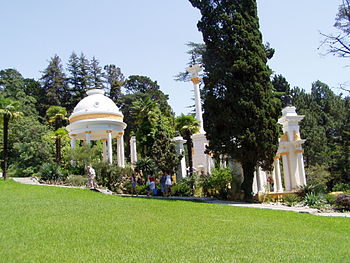
Parks [ edit ]
- Dendrarium ( Dendrary Botanical Garden ), 74, Kurortny - Khosta district , ☏ +7 8622 62-18-42 . Daily 08:00 - 21:00 . The best park at the Black Sea coast, where a wide variety of trees' species is collected. A beautiful, shadowy, and well-managed place, excellent for leisure, unhurried walking etc. Use cable-car to get to the mountain from the coastal part of Dendrarium and discover a scenic panoramic view of the sea and Caucasus ridges.
Fischt Olympic Stadium [ edit ]
Watch football at a stadium that has hosted the 2014 Winter Olympics and Paralympics, and the 2018 FIFA World Cup. The home team are PFC Sochi, who play in the Russian National League, the second tier of Russian football. Until 2018 they were FC Dynamo St Petersburg, then they upped sticks and moved down to the Black Sea. The stadium (capacity over 47,000) is actually in Adler, 25 km east of Sochi and only 3 km from the border with Georgia. Long-distance and metro trains terminate at nearby Olympic Park Station.
Do [ edit ]

- Boat tours ( Sochi port ), ☏ +7 8622 609-603 . 11:00 - 21:00 . 1-hour regular sea boat tours. Organized by Sochi seaport, May to October.
Leisure [ edit ]
- Nautilus Aquapark , Pobedy str., 2/1 - Lazarevskoe , ☏ +7 8622 74-0187 .
Sports [ edit ]
- Kitesurfing
Festivals and events [ edit ]
- Kinotavr . Open Russian Film Festival - conducted in June annually since 1990. Kinotavr is the largest Russian film festival attracting the top talents of Russian cinema: directors, producers, actors, writers, and photographers.
- 43.41 39.969 2 Sochi Autodrom , Triumfalnaya St 26, Adler . This motor-racing circuit in the Adler Olympic complex hosts the Russian Grand Prix as part of the Formula One tournament in autumn. The next F1 race was cancelled and racing in Russia with F1 was suspended indefinitely. ( updated Oct 2021 )
Learn [ edit ]
Russian language [ edit ].
There is no sustainable practice of learning Russian as a foreign language in Sochi. Two places can offer such classes potentially:
- Russian University of Peoples' Friendship (RUDN), Sochi Branch ( Department of additional education ), Kuibysheva, 24 - Adler , ☏ +7 8622 40-0895 , [email protected] . This university is among leaders in Russia by number of international students. The Sochi branch is, however, a small one, so your case with Russian study will be probably solved on individual basis.
- Sphere Travel , 11 Navaginskaya Str. - Central , ☏ +7 8622 64-6305 , [email protected] . This company several years ago offered the following programs of Russian : general, intensive, business, speaking, and academic Russian. Due to lack of students please check the actual situation before planning study.
Work [ edit ]
Getting a work permit in Russia is not usually an easy process, at least if you are not a former Soviet Union state citizen. Sochi can possibly be an exception, as the preparation of Olympic Games will create many new workplaces. Some of the potential vacancies will require international expertise. Highly qualified international candidates will have simplified visa and work permit procedure.
There are potential vacancies for English tutors, as the demand for English study in the city is constantly growing. It is also possible to find sport instructors' jobs, in both winter (skiing, snowboarding) and summer (diving, yachting, kitesurfing) sports, but knowledge of Russian is essential for those positions.
Eat [ edit ]
Budget [ edit ].
- Art-Pizza , Teatralnaya street, 9 - Central ( Near the Winter Theatre ), ☏ +7 8622 62-2666 . 10:00-00:00 . A reasonably priced pizza place
- Mama Roza , Moskovskaya, 19A - Central , ☏ +7 8622 64-2872 . 11:00-23:00 . In the center, close to the main train terminal, this cafe offers a budget variety of pizza and other Italian-style food.
- McDonald's , Kurortny Prospekt 17/1 - Central , ☏ +7 8622 64 87 79 , +7 8622 64 86 74 , +7 8622 64 86 85 . 08:00-24:00 . The only McDonald's restaurant in Sochi, as of 2011. Traditionally popular for its fast-food and free wi-fi.
Splurge [ edit ]
- La Terrazza , Kurortny Prospekt 105 B - Central , ☏ +7 8622 96-58-58 . 12:00-00:00 . Italian cuisine.
- Platforma , Chernomorskaya street 11/2, Sunny Beach (Solnechny Plyazh) ( Central Sochi ), ☏ +7 918 918-42-42 . 12:00-92:00 . Probably the most luxurious restaurant in the city. Mediterranean fish & seafood cuisine, plus several meat specialties. Good cocktails.
Connect [ edit ]
Mobile operators [ edit ].
Sochi has the traditional set of Russian mobile operators:
GSM 900/1800:
- Beeline ( by Vympelcom ), ☏ +7 861 945-95-95 .
- Megafon , ☏ +7 800 333 0500 .
- MTS ( Mobile TeleSystems ), ☏ +7 800 333 0890 .
- Tele2 . A multinational European provider, operating in 22 countries including Russia . Tele 2 has its network in many regions of the country, excluding Moscow . Comparing to others, it is the cheapest operator, but having the smallest coverage area.
- Skylink . The all-Russian CDMA operator, having less subscribers, than GSM operators, but popular for faster and cheaper mobile Internet service.
- Yota , toll-free: +7 800 700 55 00 .
Check roaming prices before using non-Russian sim-card, especially those for mobile Internet. Some standards of mobile connection are not supported in Russia , e.g. those for Japan and United States .
Staying in Russia for a week or more, it's definitely worth to buy a local sim-card, but be aware, that a passport is needed for that. The easiest way refill a local mobile account is to use an ATM for that. Most ATMs have bilingual interfaces, allowing numerous kinds of payments, including those for mobile services by local operators.
Media [ edit ]
Among dozens of Sochi newspapers, magazines and radio stations, there are no expat-oriented or internationally focused media. Everything is published in Russian only. Hotels often provide satellite TV with standard assortment of international channels (BBC, CNN, Russia Today, etc.) Following resources are recommended in addition:
- Sochi Life TV Channel . Music channel with Russian and international playlists, mixed with views of Sochi and tourist information (in Russian only). Available within some satellite TV packages, e.g. Tricolor.
Cope [ edit ]
Consulates [ edit ].
Sochi has the following consulates:
Go next [ edit ]
Abkhazia [ edit ].

Once a flourishing sea resort and part of Soviet Georgia , this mountainous Caucasian republic passed through a bloody civil war with Georgians after the Soviet Union collapse, proclaimed its independence and was supported by Russia, but yet unrecognized by most countries. Honestly loved by many Russian tourists, Abkhazia is undeservedly mostly unknown by travellers from other parts of the world.
Abkhazia is quite small and can be quickly discovered within a weekend, but longer stay is certainly needed for deeper impressions. The monastery and the cave at New Athos , as well as Lake Ritsa , are definitely among most amazing places at the Black Sea. This breathtaking beauty mixed with Abkhazian poverty and the remains of the civil war will leave no one indifferent. Locals are very friendly, but only few of them will understand anything in English.
Sochi is the only place with Abkhazia border crossing possibility from Russian side. There is a crossing point at Vesyoloe (southern part of Adler district). It can be crossed both by foot and by car/bus (two separate bridges through the border Psou river). Coming to Abkhazia by foot, you will find a marshrutka parking right after the bridge - a cheap opportunity to reach any key destination of the country. The Abkhazian capital Sukhum is also reachable by a direct bus or commuter train ( elektrichka ) from Sochi. There is also an option to get to Gagra , Abkhazia by boat from Sochi port.
Going to Abkhazia be prepared to comply with Abkhazian visa requirements . Be also aware that, to return to Russia after a trip, you may need double-entry or multi-entry Russian visa.
Adygea [ edit ]
A fully enclaved into Krasnodar Krai small national autonomy, neighboring to Greater Sochi, Adygea has a significant tourist potential, which is underestimated. Rafting, waterfall seeing, trekking and other mountain activities in front of awesome Caucasus views make this destination very promising. It is also important that Adygea is safer than any other Caucasian region except Krasnodar Krai.
Maykop , the capital of Adygea, is accessible from Sochi by train (daily, 6 hours) and bus (1-2 daily plus transit buses, 8 hours). There is also an option to reach Adygea by car (6-8 hours via Tuapse ). An extreme alternative to that is the mountainous unpaved direct road connecting Sochi with Adygea via Caucasus ridges. Be more than careful using it.
Caucasian Biosphere Reserve [ edit ]

This natural reserve has the second-largest protected area in Europe and the largest one in Caucasus mountains. It occupies the mountain ridges of Krasnodar Krai, Adygea and Karachay-Cherkessia , including part of Greater Sochi metropolitan area (Khosta district and Krasnaya Polyana), bordering Sochi National Park.
Caucasian Biosphere Reserve is the richest biodiversity treasury, having no equivalents in Russia and an international value as a piece of untouched nature with primeval habitats. Reasonably, this unique area is included into the UNESCO World Heritage List . The official site of the reserve is available in Russian only.
Two exclaved parts of the reserve, those are in Greater Sochi, are easy to visit: yew & boxtree wood at Khosta and the wild animals nursery at Krasnaya Polyana . To visit other parts of the reserve, you need to get special permit, requiring the following:
- list of participants,
- passport details and passport copies of each participant,
- name of the group's leader,
- planned route/itinerary,
- period of stay (number of days),
- entrance fee
In Sochi you can get the permit at the reserve's headquarter: Karl Marx street, 8, room 10, Adler district, Sochi.
Gelendzhik [ edit ]
A resort town at the Black Sea coast to the north-west from Sochi, one of the most popular domestic summer destinations of Russia. Gelendzhik has both natural and leisure attractions. Gelendzhik's aquapark is the largest in the country, and its surroundings have very beautiful scenery. The town is home to International Sea Aviation Conference , which is conducted there each two years.
Gelendzhik is a transit point for several buses going from Sochi (4-5 daily). A ride will take 5.5 hours. The Sea Flight fast ferry going from Sochi to Novorossiysk and back also makes stops at Gelendzhik.
Novorossiysk [ edit ]
This Krasnodar Krai 's 3rd largest city is the biggest Russian port at the Black Sea and the main cement industry center in Southern Russia . The majority of the city's tourist attractions are related to the II World War, when Novorossiysk was among Russian key battlefields. The most known memorials are Malaya Zemlya, Defence Line (Rubezh Oborony) and Death Valley (Dolina Smerti).
Novorossiysk's vicinities have beautiful nature of Caucasus foothills. On the top of local natural wonders is the amazing Abrau lake , the biggest one at Northern Caucasus. Just nearby the wine manufacture of Abrau-Dyurso is located, making this place the capital of Russian sparkling wine (tours to Abrau-Dyurso with wine testing are available). There are also several smaller beach resorts around the city.
There are several ways to get from Sochi to Novorossiysk. Buses go daily (8.5 hours). Sea Flight speed ferry connection operates from May to October, 3 times a week (Mondays, Wednesdays and Fridays). One-way ride will take about 5 hours. It is also possible to get to Novorossiysk by train via Krasnodar .
Tuapse [ edit ]
Another important Russian port at the Black Sea and the closest neighbour town bordering Greater Sochi. This is mostly industrial and transport hub, attracting fewer number of tourists, than other Russian Black Sea coastal locations. But anyway, Tuapse is good for a single-day trip from Sochi. After a look at the downtown, the awesome surroundings should be visited. There are several very scenic cliffs around, the top of those is Kiselev's Rock , a 46-meter upright cliff breaking down into the sea. There are also quite a few ancient cultural remains, such as table-stones, around Tuapse.
Any elektrichka or long-distance train from Sochi stops in Tuapse, the frequent bus/marshrutka connection is also available. Expect 2 - 2.5 hours for one-way trip from Central Sochi.
- Has custom banner
- Articles with dead external links
- Verbose Climate graphs
- Has map markers
- Airport listing
- Has mapframe
- See listing with no coordinates
- Do listing with no coordinates
- Buy listing with no coordinates
- Eat listing with no coordinates
- Articles with formerly dead external links
- Sleep listing with no coordinates
- Krasnodar Krai and Adygea
- All destination articles
- Guide cities
- Guide articles
- City articles
- Has Geo parameter
- Pages with maps
Navigation menu
- Sochi Tourism
- Sochi Hotels
- Sochi Bed and Breakfast
- Flights to Sochi
- Sochi Restaurants
- Things to Do in Sochi
- Sochi Travel Forum
- Sochi Photos
- All Sochi Hotels
- Sochi Hotel Deals
- Things to Do
- Restaurants
- Vacation Rentals
- Travel Stories
- Rental Cars
- Add a Place
- Travel Forum
- Travelers' Choice
- Help Center
Cruise Line - Sochi Forum
- Europe
- Russia
- Southern District
- Krasnodar Krai
- Greater Sochi
- Sochi
Cruise Line
- United States Forums
- Europe Forums
- Canada Forums
- Asia Forums
- Central America Forums
- Africa Forums
- Caribbean Forums
- Mexico Forums
- South Pacific Forums
- South America Forums
- Middle East Forums
- Honeymoons and Romance
- Business Travel
- Train Travel
- Traveling With Disabilities
- Tripadvisor Support
- Solo Travel
- Bargain Travel
- Timeshares / Vacation Rentals
- Greater Sochi forums
- Sochi forum

http://www.tripadvisor.ca/ShowTopic-g294459-i705-k8615094-Cruising_the_Black_sea_to_Sochi-Russia.html
This topic has been closed to new posts due to inactivity.
- Sochi to Trabzone ferry Oct 01, 2023
- Privat tour guide Nov 22, 2021
- Looking for ski shop that speaks English to buy & fit boots Oct 16, 2020
- Ski holiday in Esto-Sadok Aug 10, 2020
- French expat coming to live in Sochi May 28, 2020
- Crossing the border to Abkhazia,Georgia Dec 30, 2019
- Hospital Oct 08, 2019
- visit to a Sanatorium. Oct 06, 2019
- Where to Stay: Sochi Center or Marriott Hotel? Sep 19, 2019
- Football game on grand prix weekend Sep 08, 2019
- Attractions near the Skypark Aug 10, 2019
- Summer in Sochi Aug 02, 2019
- Ceramic studio in sochi Jul 11, 2019
- private driver Jul 07, 2019
- How to get from Sochi to Tbilisi? 3 replies
- 2014 Olympics- kinda early but,,,where to stay?? 4 replies
- Direct flight Sochi to Dubai 3 replies
- 2014 Olympics 76 replies
- Ferries, cruises 9 replies
- One day in Sochi - what to see and do? 24 replies
- nightlife in sochi 4 replies
- Adler airport to town transportation 2 replies
- October 10, 2011 Black Sea cruise Sochi, Russia 2 replies
- Transportation from Anapa to Sochi 3 replies
Pure electric
C40 Recharge
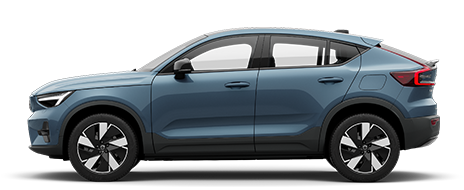
XC40 Recharge
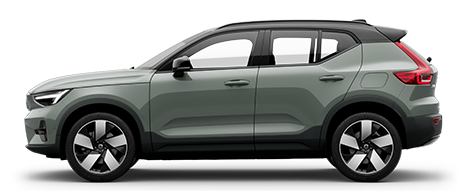
- Learn about V317 Recharge
- Learn about XC40 Recharge
- Learn about XC90
- Learn about XC60
- Learn about XC40
- Learn about S90
- Manage Volvo ID
- Car Configurator
- Volvo Cars app
- Volvo Warranty
- Accessories
- Volvo Genuine Parts Extended Warranty
- Volvo family cars
- Our heritage
- Sustainability
- Child Safety
- Investor Relations
- Experience Volvo Cars
- Download Brochures
- Volvo in the News
- Media/Press
- Lifestyle Collection
- Annual Return
- Code of Conduct
- Find A Dealer
- Selekt Used Cars
- Tre Kronor Experience
Adaptive cruise control * - symbols and messages
The adaptive cruise control (ACC – Adaptive Cruise Control) helps the driver to maintain an even speed combined with a pre-selected time interval to the vehicle ahead.
Sometimes the adaptive cruise control may display a symbol and/or text message. Here are some examples - follow the recommendation given if appropriate:
Related documents
- Cruise control
- Adaptive cruise control (ACC)
- Adaptive cruise control - overview
Recommended
Dramatic video captures chopper pulling pregnant woman from disney cruise ship.

North Carolina HS student charged after slapping teacher in profanity-filled classroom tantrum

Matthew McConaughey on why he feels so connected to Marfa, Texas

Car vs. garage! Doorbell camera captures wild crash

I’m a woman with a beard — here’s my advice for accepting body hair

Crying baby in bar ticks off Texas woman: ‘You’re an idiot!’

Video shows unsuspecting shopper falling into massive sinkhole as second floor of shopping center collapses

The bright side of the California storms? Spectacular rainbows

Jerry Seinfeld berated by anti-Israel protesters outside NYC event

Joe Rogan blasts ‘The View’ over co-hosts feud with author Coleman Hughes: ‘Rabies-infested henhouse’

Out-of-control Omaha mom slaps, stomps on two women at a Mega Saver
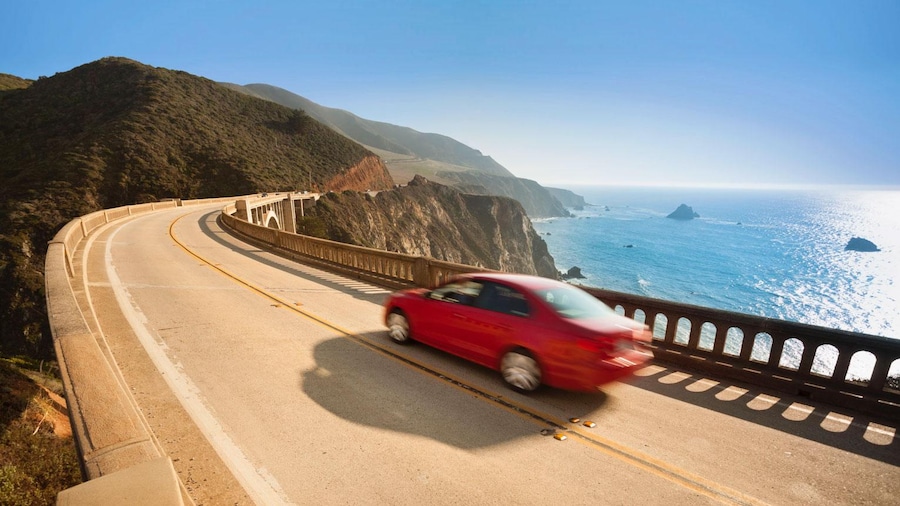
Cheap Car Rental in Sochi
Include AARP member rates
Membership is required and verified at pick-up.
A trusted Expedia brand
Book a car in 3 easy steps
Find great deals
Recent car searches in Sochi, Krasnodar Krai - Russia

Don't see what you're looking for?
Frequently asked questions.
- Dagomys Beach (6 miles away).
- Khosta Beach (9 miles away).
- Adler Beach (13 miles away).
Car Rental Information
Recommended cities.
- Car rentals in Tokyo
- Car rentals in Bangkok
- Car rentals in Taipei
- Car rentals in Phuket
- Car rentals in Osaka
- Car rentals in Seoul
- Car rentals in Kyoto
- Car rentals in Kuala Lumpur
- Car rentals in Manila
- Car rentals in Pattaya
- Car rentals in Fukuoka
- Car rentals in Shanghai
- Car rentals in Sapporo
- Car rentals in Ho Chi Minh City
- Car rentals in Da Nang
- Car rentals in Delhi
- Car rentals in Hanoi
- Car rentals in Beijing
- Car rentals in Nagoya
- Car rentals in Siem Reap
- Car rentals in Mumbai
- Car rentals in Boracay Island
- Car rentals in Koh Samui
Nearby Cities
- Car rentals in Gagra
- Car rentals in Adlersky
- Car rentals in Sirius
- Car rentals in Krasnaya Polyana
- Car rentals in Plastunka
- Car rentals in Alakhadzi
- Car rentals in Dagomys
- Car rentals in Volkonka
- Car rentals in Lazarevskoye
- Car rentals in Vesyoloe
- Car rentals in Tuapse
- Car rentals in Monastyr'
- Car rentals in Solokhaul
- Car rentals in Chereshnya
- Car rentals in Verkhne-Imeretinskaya Bukhta
- Car rentals in Chvizhepse
- Car rentals in Agoy
- Car rentals in Razdolnoye
- Car rentals in Novaya Matsesta
- Car rentals in Sergey-Pole
- Car rentals in Uch-Dere
- Car rentals in Baranovka
- Car rentals in Nizhneye Uchdere
- Car rentals in Nizhnee Orekhovo
Nearby Airports
- Car rentals at Sochi Intl. Airport (AER)
Car Rentals in Top Destinations
Car rentals in sochi, car rental companies, top locations in the u.s..
- Car Rental Orlando Airport
- Car Rental Fort Myers Airport
- Car Rental Tampa Airport
- Car Rental Miami Airport
- Car Rental Phoenix Airport
- Car Rental Denver Airport
- Car Rental Las Vegas Airport
- Car Rental Toronto Airport
- Car Rental Dallas Airport
- Car Rental Nashville Airport
- Car Rental Palm Springs Airport
- Car Rental Edmonton Airport
- Car Rental Newark Airport
- Car Rental LAX Airport
- Car Rental SJO Airport
- Cheap Car Rental Orlando
- Cheap Car Rental Miami
- Cheap Car Rental Fort Lauderdale
- Cheap Car Rental Tampa
- Cheap Car Rental Los Angeles
- Cheap Car Rental New York
- Cheap Car Rental Phoenix
- Cheap Car Rental Atlanta
- Cheap Car Rental Toronto
- Cheap Car Rental Dallas
- Cheap Car Rental Houston
- Cheap Car Rental Melbourne
- Cheap Car Rental San Francisco
- Cheap Car Rental Chicago
- Cheap Car Rental Seattle
Rental car types
- 4 Wheel Drive Car Rental
- Pickup Truck Rental
- 15 Passenger Van Rental
- 12 Passenger Van Rental
- Minivan Rental
- Full Size SUV Rental
- Luxury Car Rental
- Passenger Van Rental

IMAGES
VIDEO
COMMENTS
It uses symbols to let you know the state of the cruise control. Every car manufacturer uses symbols with little variation, so it is better to visit the car owner's manual for the specific symbol your car use. Cruise Control Text Symbol. Some cars, especially old cars use the text symbol "Cruise Main" to show the cruise control is turned ON.
The cruise control symbol on your car dashboard represents the availability and status of the cruise control feature. It is typically depicted as a speedometer icon with an arrow or a vehicle icon with speed lines. The symbol is designed to indicate that the cruise control system is active and ready to be engaged.
Most cruise control lights use 2 different colors to let you know what state the system is in. Typically, the cruise control light will be orange when the system is on, but a speed hasn't been chosen yet. Once a speed is selected, this light will turn green. If the computer has detected an issue, this light will stay orange and likely won't ...
Common Cruise Control Symbols and Indicators Understanding the various symbols and indicators associated with cruise control is important for safe and effective usage. These symbols typically appear on the dashboard (or on the side of the steering wheel) and may include a speedometer icon, "SET," "RES" (resume), and "CANCEL".
The cruise control warning light appearing on your dashboard is an indication that there might be an issue with the cruise control or throttle system in your car. Cruise control not working can occasionally just mean the system isn't engaged, but it could also indicate a problem with faulty sensors or wiring.
The cruise control symbol indicates that the cruise control system is engaged and maintains the set speed. The symbol may also change color or blink to indicate different states or potential issues with the system. Note that the symbol may vary between different car makes and models.
Short video about Cruise Control Indicator Light, what it means for your vehicle, and crucial steps to take when it illuminates. Understanding the Cruise Con...
Cruise Control - This symbol typically looks like a car with a speedometer in front of it, and it indicates that your car's cruise control system is engaged. Cruise control allows you to maintain a steady speed without having to constantly adjust the accelerator pedal.
4. Traction Control. Traction control warning light on car dashboard. What it looks like: Cthulhu wearing a fedora. What it means: The car's traction control system is engaged. 5. Engine Warning ...
Cruise Control Symbol: This light illuminates whenever cruise control is activated. Your car may also have a separate light indicating that the cruise control feature is on and ready to be activated, sometimes denoted by a separate "CRUISE" symbol in the instrument cluster, or just a small LED light on the button itself.
Hill Descent Control. A hill descent control symbol indicates that the hill descent system is turned on and will limit the car's speed while going downhill. 74. Steering Lock Warning Light. A steering lock warning light means that there is an issue with the steering lock or that the car key is not recognized.
The cruise control light typically features a speedometer icon, and it can indicate a few different things depending on the color. ... Another EV-specific light worth noting is a symbol of a car with an exclamation point. This indicates a fault somewhere in the car's electrical system, and you should get the vehicle serviced immediately if it ...
The cruise control symbol in a car is a valuable tool for maintaining a consistent speed and reducing driver fatigue on long drives. By activating and adjusting the cruise control, drivers can enjoy a smoother and more controlled driving experience. However, it is important to be aware of the benefits and considerations of using cruise control ...
1. Definition. Cruise control is an electronic system that allows a vehicle to maintain a consistent speed, without the need for continuous driver input on the accelerator pedal. 2. Activation. Cruise control systems are typically activated by pressing a button or switch located on the steering wheel or dashboard. 3. Function.
Cruise Control. This light will come on when cruise control is engaged. It looks very similar to the adaptive cruise control symbol but doesn't feature the car next to the speedometer. Lane Assist. Lane assist is a common safety feature on many modern vehicles. The symbol is usually an image of a car with lines on both sides to represent a lane.
Common cruise control icon on dashboards specified by ISO-7000-2047, ISO 2575:2010, and ISO 6727. Another icon exists for the more modern adaptive cruise control, but some cars also use the cruise control icon for the speed limiter function, which has no standard icon.. Cruise control (also known as speed control, cruise command, autocruise, or tempomat) is a system that automatically controls ...
Car Symbols on Steering Wheel: Controls! Car symbols on the steering wheel are icons that represent various functions and controls, like horn activation, airbag indication, multimedia system control, voice command activation, and cruise control settings. These symbols are designed to be universally recognizable and enable drivers to easily ...
The car with an arrow symbol on a car's dashboard typically indicates that the car's cruise control function is active. When this light is illuminated, it means the vehicle's speed is being maintained automatically without the need to press the accelerator.
A number of symbols and messages relating to Adaptive Cruise Control1 (ACC2) may be displayed. Several examples are provided below. Symbol. Message. Meaning. The symbol is illuminated. The vehicle is maintaining the stored speed. Adaptive Cruise Contr. Unavailable.
43.576389 39.728611. 2 Sochi Art Museum, Kurortny, 51 - Central, ☏ +7 8622 62-2947, +7 8622 62-2916. The museum occupies one of the most beautiful buildings of Sochi, built in 1936. Its collection is the largest at the Black Sea coast (more than 5 000 items of various style and period from antique to contemporary).
Answer 1 of 4: Does anyone know of a cruise liner that stops at this port or anywhere in the black sea please as my husband and I want to travel to se see the black sea area.We are both in our late 60s so don't want to travel any other way. Thanks
Volvo Support for V40 Adaptive cruise control - symbols and messages | The adaptive cruise control (ACC - Adaptive Cruise Control) helps the driver to maintain an even speed combined with a pre-selected time interval to the vehicle ahead. Sometimes the adaptive cruise control may display a symbol and/or text message. Here are some examples - follow the recommendation given if appropriate:
Dramatic video captured the moment a pregnant woman suffering medical complications was airlifted from a Disney cruise ship.. Footage posted by the US Coast Guard shows a rescuer being lowered ...
Car Rental Information. City pick-up location. Sochi. Lowest price. Popular car types: SUV, Full size, Economy & Standard. Sochi Car Rental. carrentals.com offers you great short and long term car rental deals from car rental companies if you Book Now!